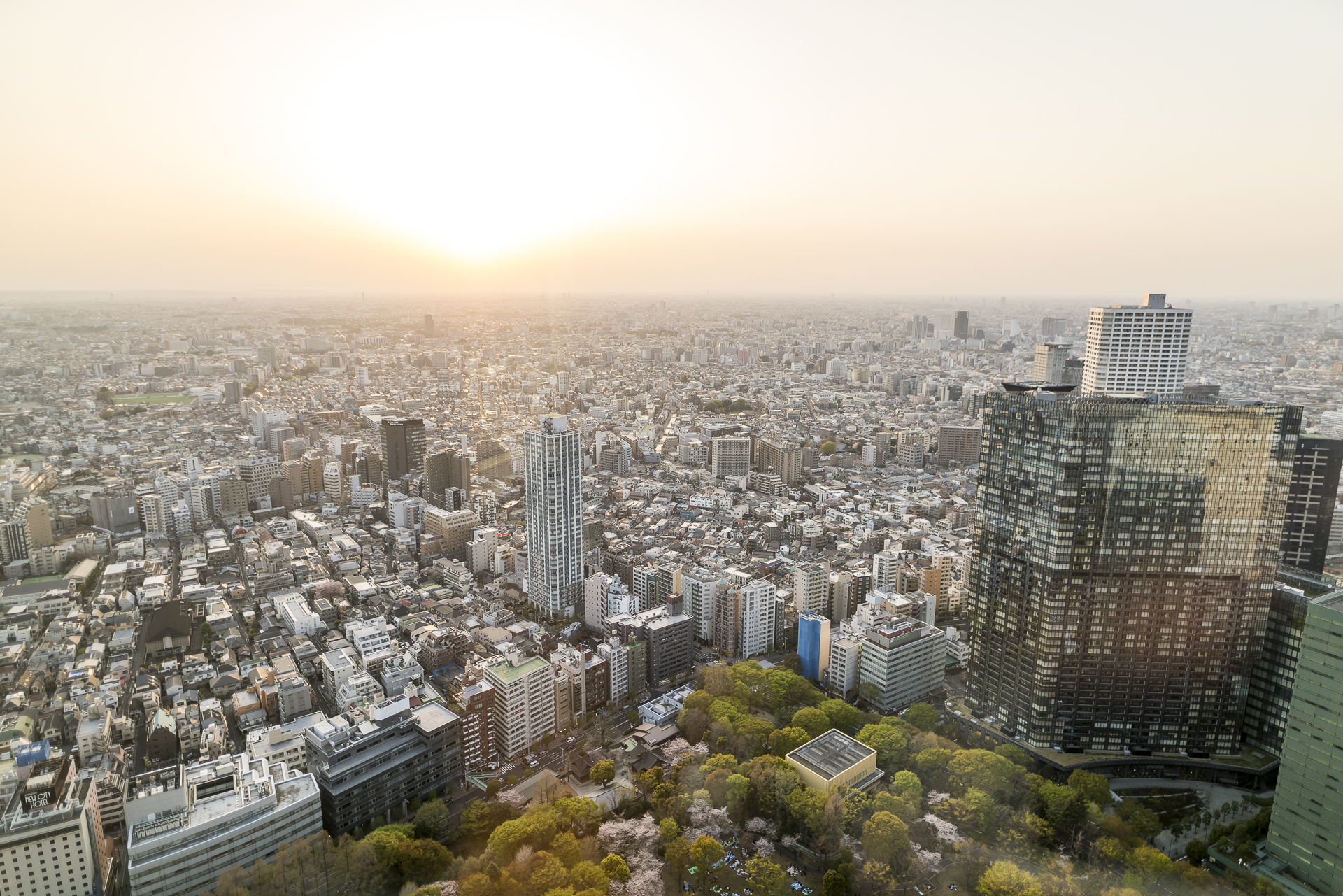
Tokyo sights: My tips for the mega metropolis
The first time I looked at the map of Tokyo, I felt overwhelmed. In which part of the city should we stay? What is the fastest way to get from A to B? And anyway: How many days do I have to calculate to even come close to grasping this mega-metropolis?
As a prelude to our 30-day trip to Japan, we spent six nights in Tokyo, covering countless kilometers on foot and by metro. And since the many sights make you hungry, in my Tokyo travel guide the food plays just as important a role as the classic sights. Below you will not only find ideas and tips on what to do in Tokyo, but also exquisite restaurant recommendations. 楽しんで
Travelled – in a roundabout way to Tokyo
We didn’t travel directly from Switzerland, but via Hawaii to Japan. The Honolulu – Tokyo Narita route is directly served by several airlines (Hawaiian, United, Japan Airlines, ANA) with a flight time of around nine hours. I first tried to book a flight with Japan Airlines, but failed with their booking system, which automatically identifies me as an American when I enter the departure city “Honolulu”. In the end, the second option, ANA, was the better choice anyway, as ANA is a Star Alliance member and I was able to credit the miles for the flight. The cost of the flight ticket (economy class) was 550 CHF. It’s cheaper to book an AirAsia flight to Osaka. Overall, the ANA flight was satisfactory for me. Our departure time was postponed by two hours in advance, but otherwise everything went smoothly. And I took advantage of the flight until the last second to catch up on Hollywood movies.
Entering Japan is a simple undertaking. On the plane, I receive the immigration and customs card, after which my fingerprints are taken at passport control and a photo is taken. Finally, the border guard uses barcode stickers to stick the free visa into my passport for up to 90 days. While we were not asked any questions at passport control, the gentleman from customs wants to know more. Where do we come from? And when was the last time we were in Switzerland? Curious, he flips through my passport with the numerous visas and lets the friend open his duffle bag. After a quick perusal of the bag, we are “dismissed”. Konichiwa Tokyo!
The last challenge of the day is the drive from Tokyo Narita Airport to our accommodation near the Ushigome-yanagichō subway station. To do this, we first take the Kisei Express to Ueno Station (cost: 2,450 yen) and change to our metro line there. The entire subway guidance system is labeled in both Japanese and English, so navigating it isn’t rocket science. After another hour, we reach our destination in the middle of the metropolis.
Done – see the most beautiful sights of Tokyo
Tokyo – or rather the 23 districts in the area of the administrative unit dissolved in 1943 – has over 9 million inhabitants on an area of 622 km2. Together with Yokohama, Tokyo is one of the largest metropolitan areas in the world with a population of around 38 million. Impressive numbers! The 23 districts also explain why Tokyo lacks something like a classic city center. Each district has its own centre. To get from one sight to another, you can take the metro for 30 – 45 minutes (or longer), which of course takes a lot of time. Every day we tried to head for one or two districts close to each other and bundle the sights bite-by-bit. My original plan was for us to take three full days for Tokyo and then go on two more day trips to Nikko and Kamakura. In the end, three days were not enough for us and we decided not to take the day trip to Nikko in favor of another day in Tokyo.
Visiting Tokyo’s Historic Corners |
First of all, we took a look at the historic corners of Tokyo. This includes Senso-ji Temple in the Asakusa district. Admission to this temple is free and the temple grounds (with the exception of the main hall) are open throughout. We headed for the temple complex shortly before nine o’clock in the morning and already at this time there is a lot going on here. However, as soon as we leave the temple complex, we find ourselves in deserted cross streets. World War II earthquakes, fires, and bombs have destroyed much of Tokyo’s historical fabric. Thus, hardly any building in Asakusa is really old. Nevertheless, I like the nostalgic flair that the alleys around the temple complex exude.
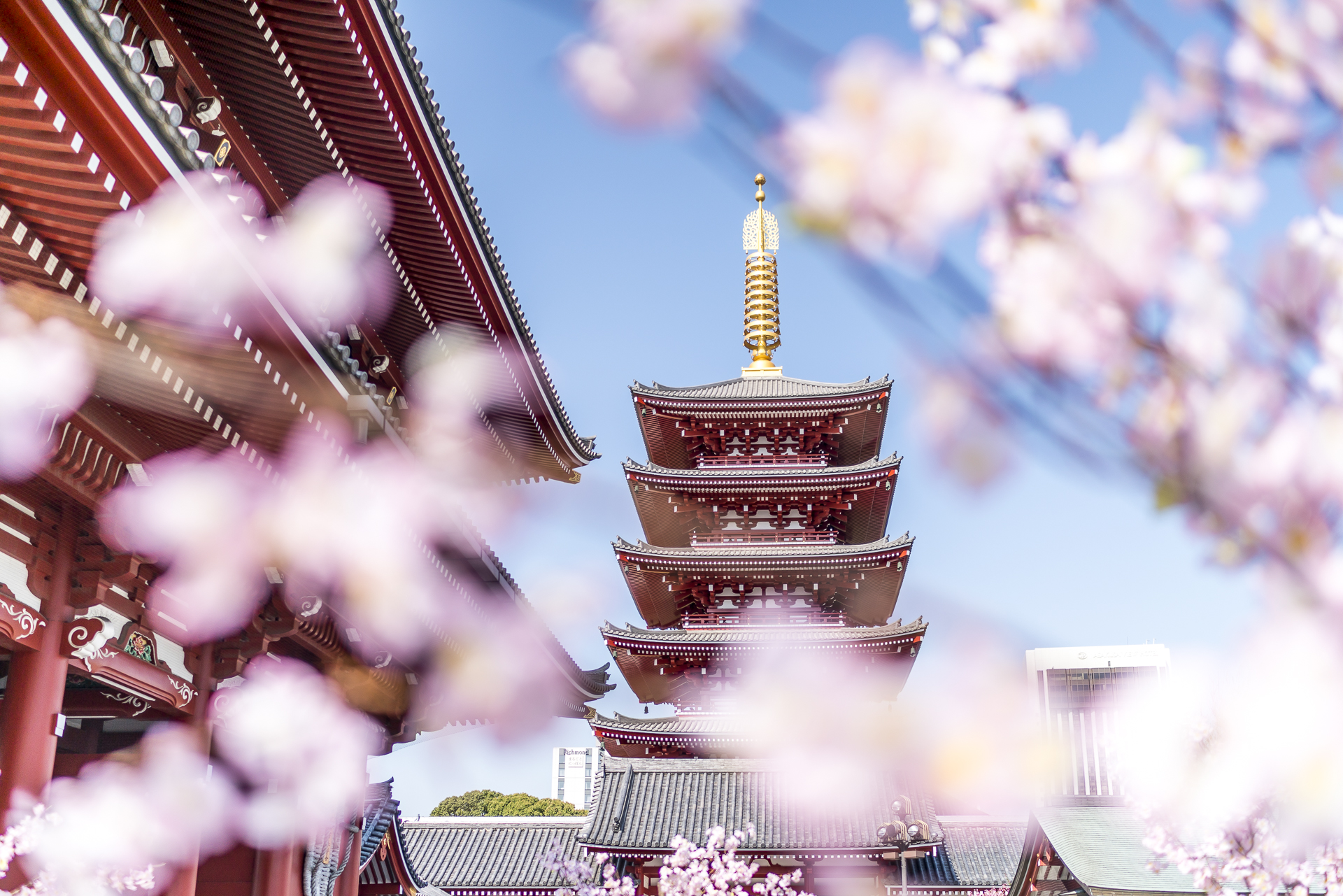
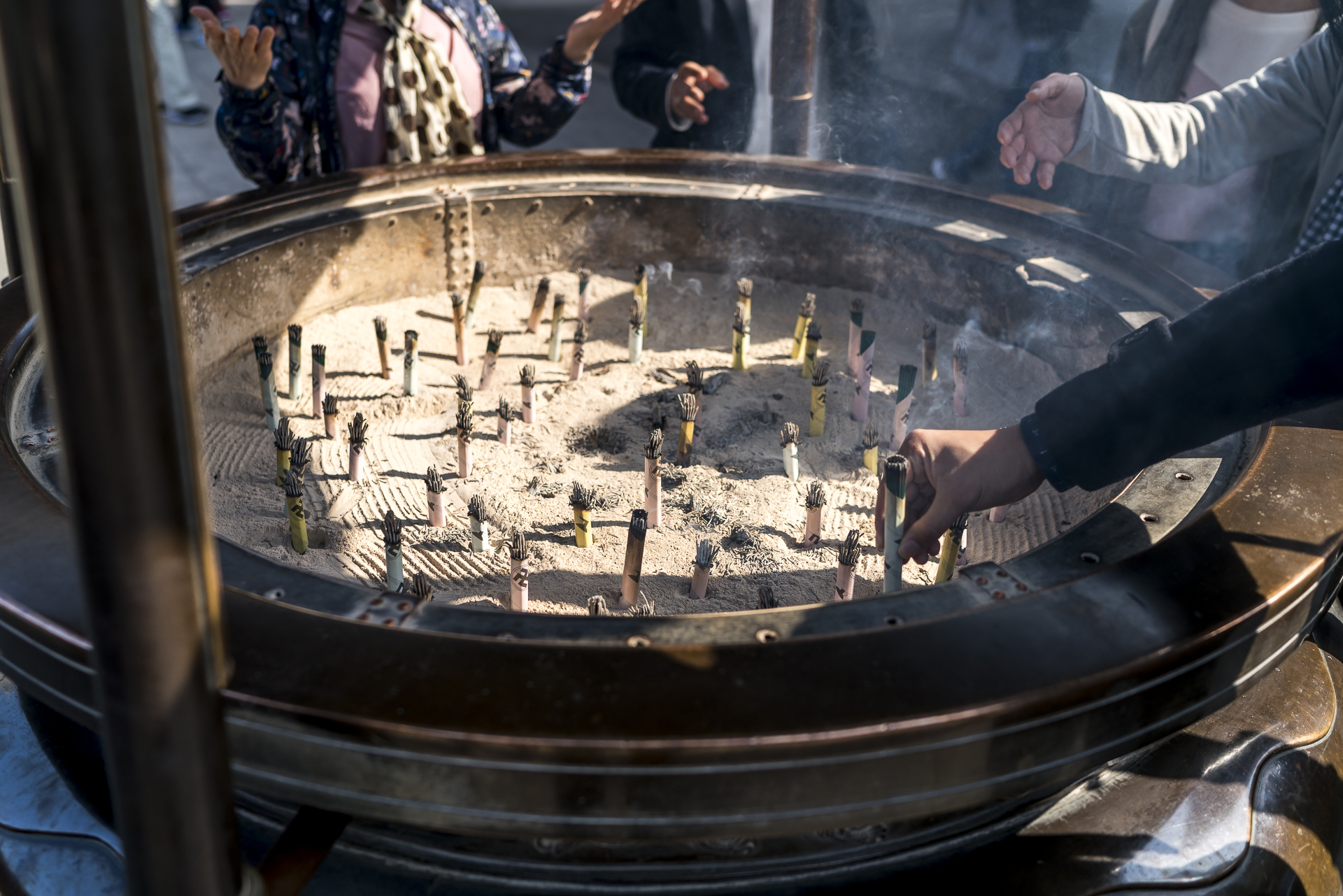
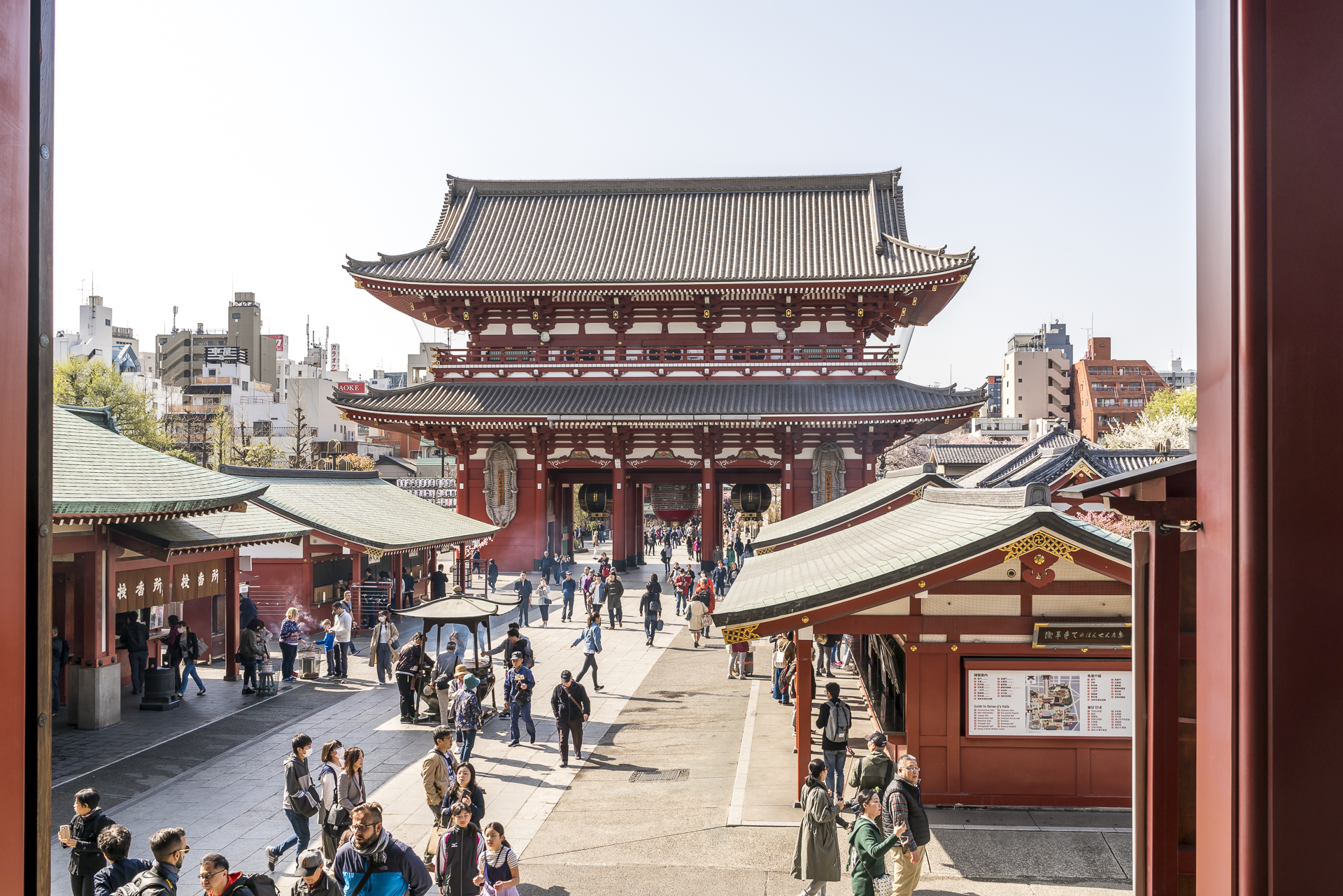
A second historical spot in the middle of Tokyo is the Imperial Palace. The imperial court was moved from Kyoto to Tokyo in the 19th century after the Meiji Restoration. The four-part palace complex stretches over six kilometers and yet seems very modest at first glance. At least if you expect magnificent palace buildings. We start the tour at the Seimon Bridge and walk up to the Imperial Palace East Gardens.
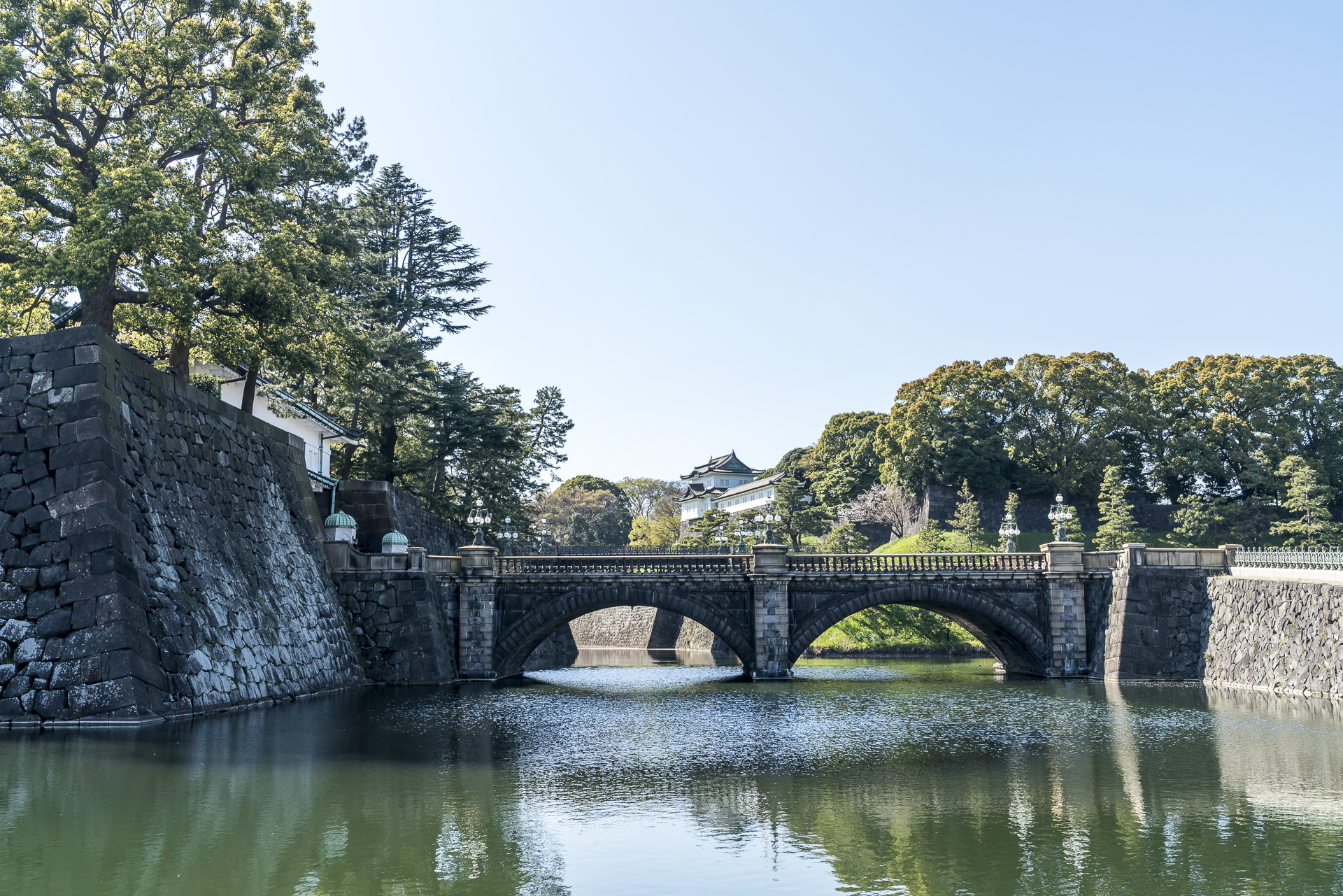
Immediately afterwards we make a detour to the Zōjō-ji Temple in Shiba Park. Parts of Zōjō-ji Temple are among Tokyo’s oldest surviving buildings from the Edo period (17th century). The temple complex is embedded in a beautiful – uncrowded – park.
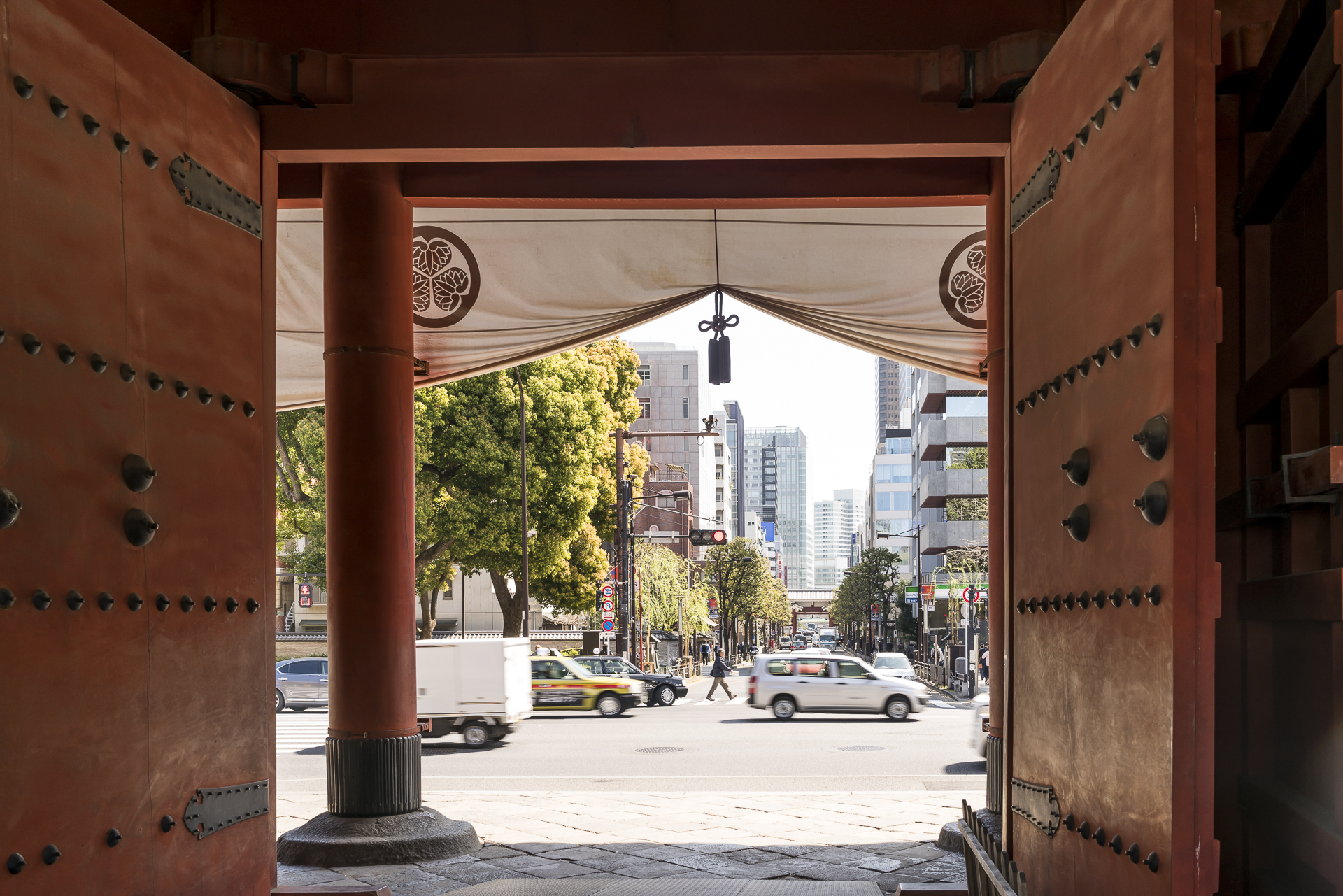
Tokyo Station is located between the Imperial Palace and Zōjō-ji Temple. Built in 1914, it is a real young man compared to the historic temple complexes, but still worth seeing. Don’t miss the view into the entrance hall!
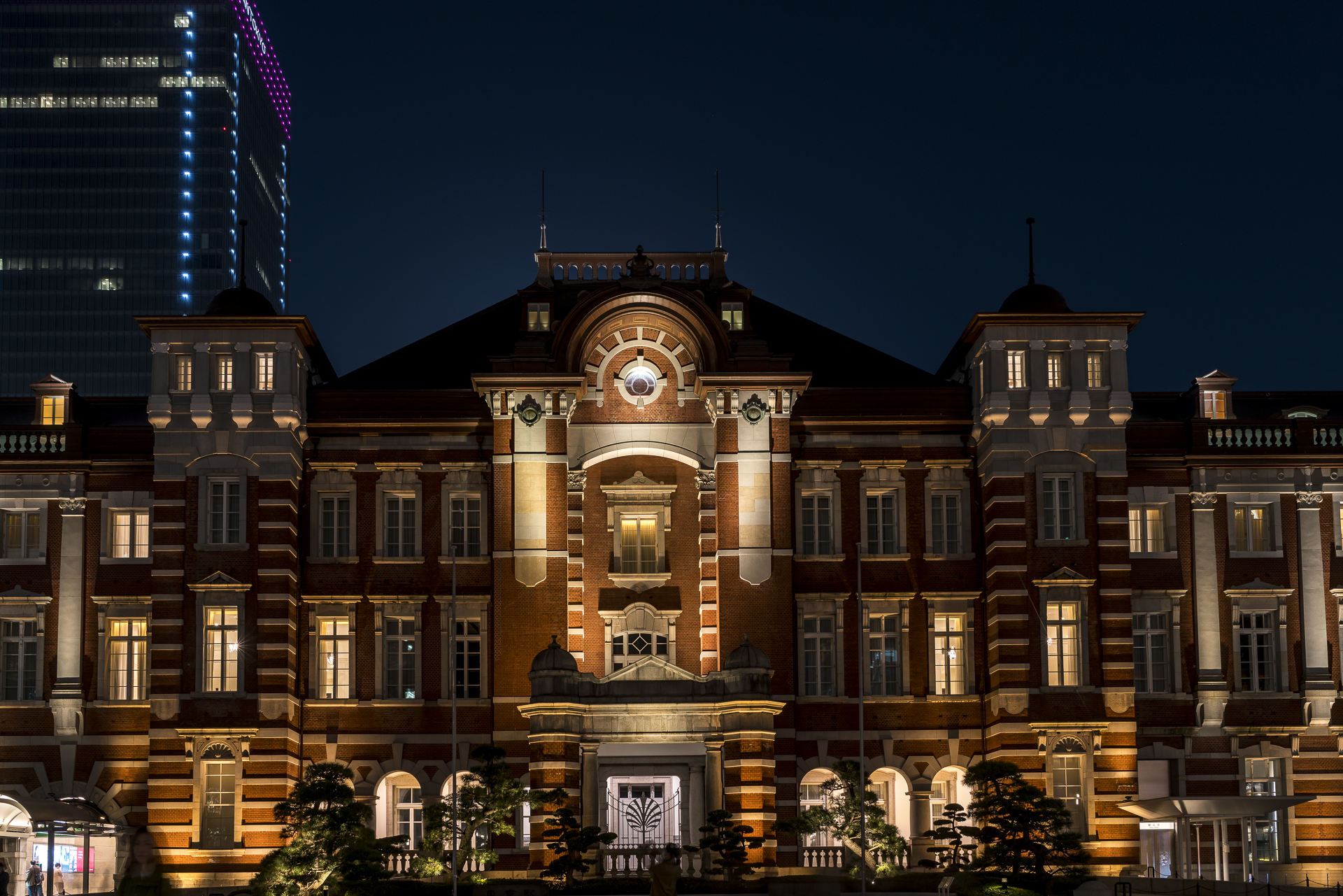
Experience contrasts in Shibuya and Shinjuku |
Of course, the well-known pedestrian crossing in the Shibuya district is also on our sightseeing program. It’s fascinating how many people cross the street here at the same time – but let’s be honest: Is it worth buying a drink at Starbucks and then queuing up to take a picture of the Shibuya Crossing from the first floor with a lot of patience? I don’t think so. And so we take the metro one stop further to Shinjuku Station.
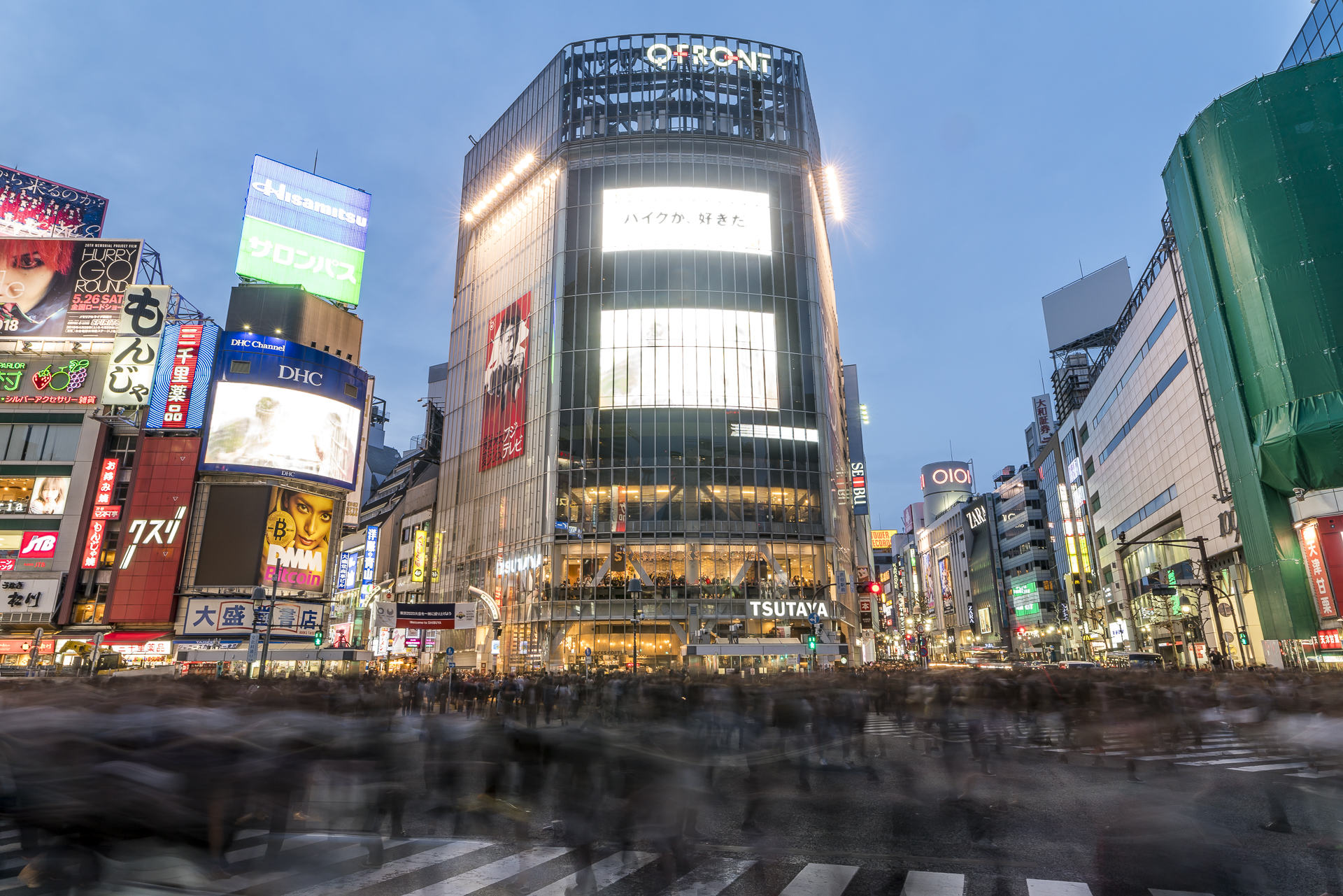
Shinjuku Station is one of the busiest railway hubs in the world and, in contrast to the Shibuya Crossing, the hustle and bustle in the eternally long walkways and corridors impressed me lastingly. In between, I would like to see a sign with the inscription “this is the fastest way out”. Despite the card, we spend what feels like an eternity looking for the way to the JR counter, where we can redeem the vouchers for the Japan Railpass. Anyway, the city maps in the train stations make me despair every time. In Japan, maps are obviously not placed north, but “as you stand”. For me, it’s pure confusion.
Shinjuku is surrounded by a motley potpourri of office buildings, shopping streets, restaurants, bars and hidden oases in backyards. Among the well-known photo motifs are Piss Alley with its many small shoebox-sized restaurants and “Shinjuku Golden Gai” consisting of six narrow alleys with numerous equally tiny bars. I am interested in the architectural aspect here and therefore we visited the area during the day so as not to disturb the bar business.
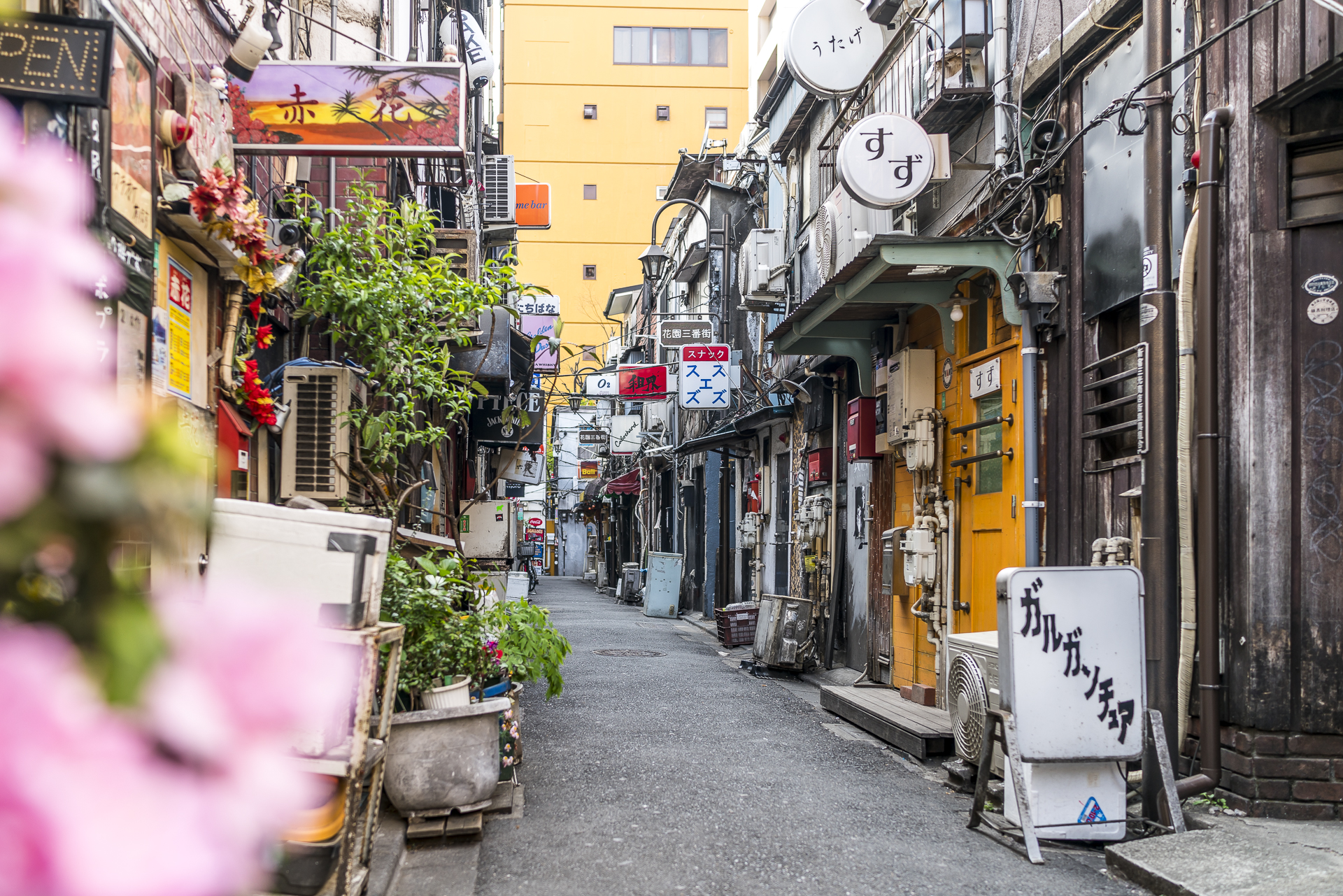
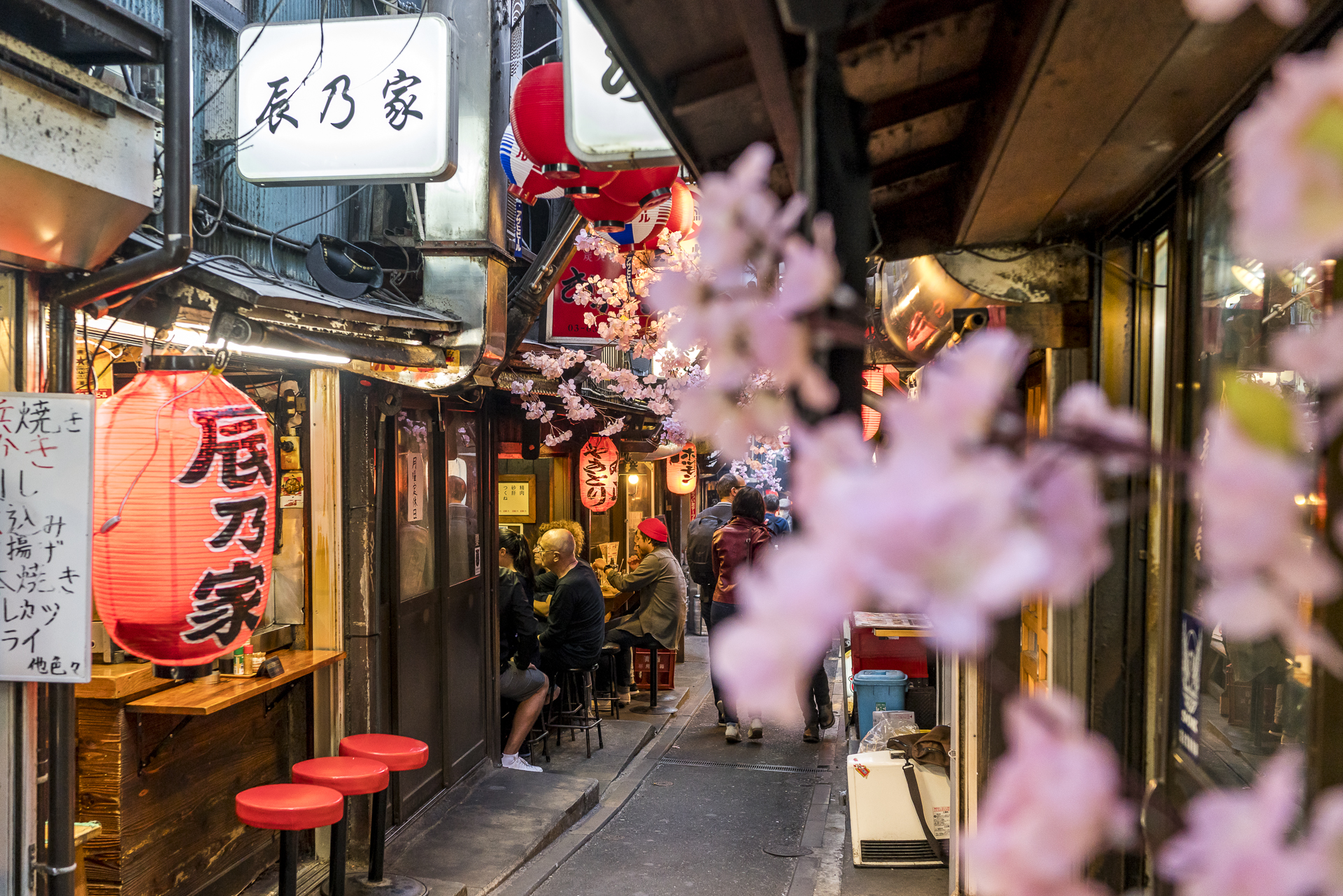
Enjoy the bird’s eye view |
As with every city trip, we don’t miss the opportunity to see the city from above in Tokyo. There are several ways to do this. Some viewing terraces are accessible free of charge, while others require a ticket. We head for the first viewpoint not primarily because of the panoramic view, but because of the museum. The Mori Art Museum in the Roppongi Hills never ceases to amaze with exciting exhibitions. Admission to the museum costs 1,800 yen and at the same time allows access to the “Tokyo City View”. In addition, the Mori Tower offers the only way to photograph the skyline of Tokyo without disturbing glass. Access to the Sky Deck costs 500 yen extra.
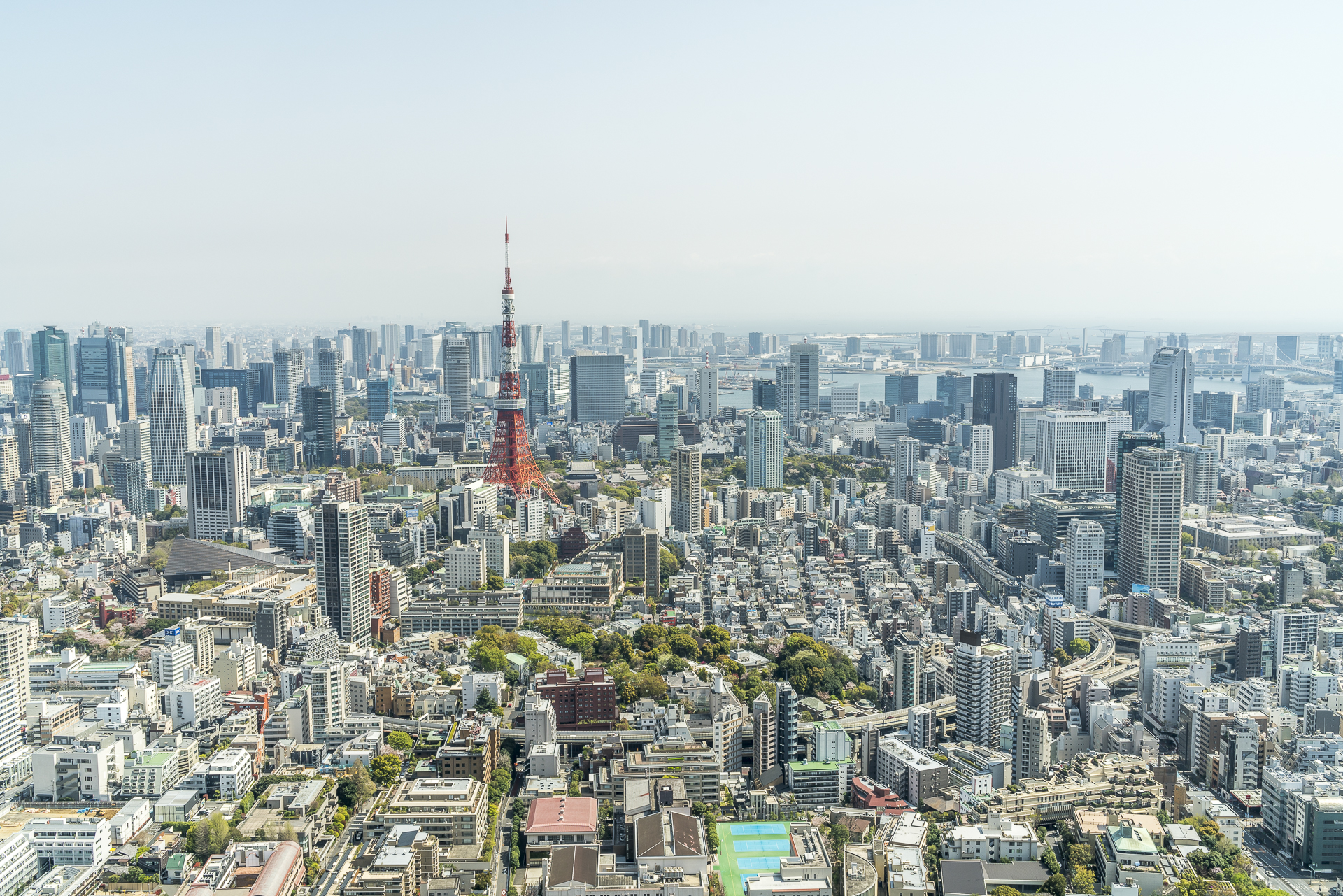
The opportunity to admire the panorama of Tokyo for free is offered by the Metropolitan Government Building in the Shinjuku district. There is an observation deck on both the north and south towers, with only the north platform open until late in the evening. We head for the North Tower shortly before sunset and fortunately have calculated a bit “late”. A considerable queue has already formed. At first, I’m afraid I’ll miss the sunset. Fortunately, we move forward quickly and after a good 20 minutes of waiting we are at the top. If there’s one “must do” in Tokyo, it’s a visit to this observation deck! Details of opening hours can be found on the Metropolitan Government Building website.
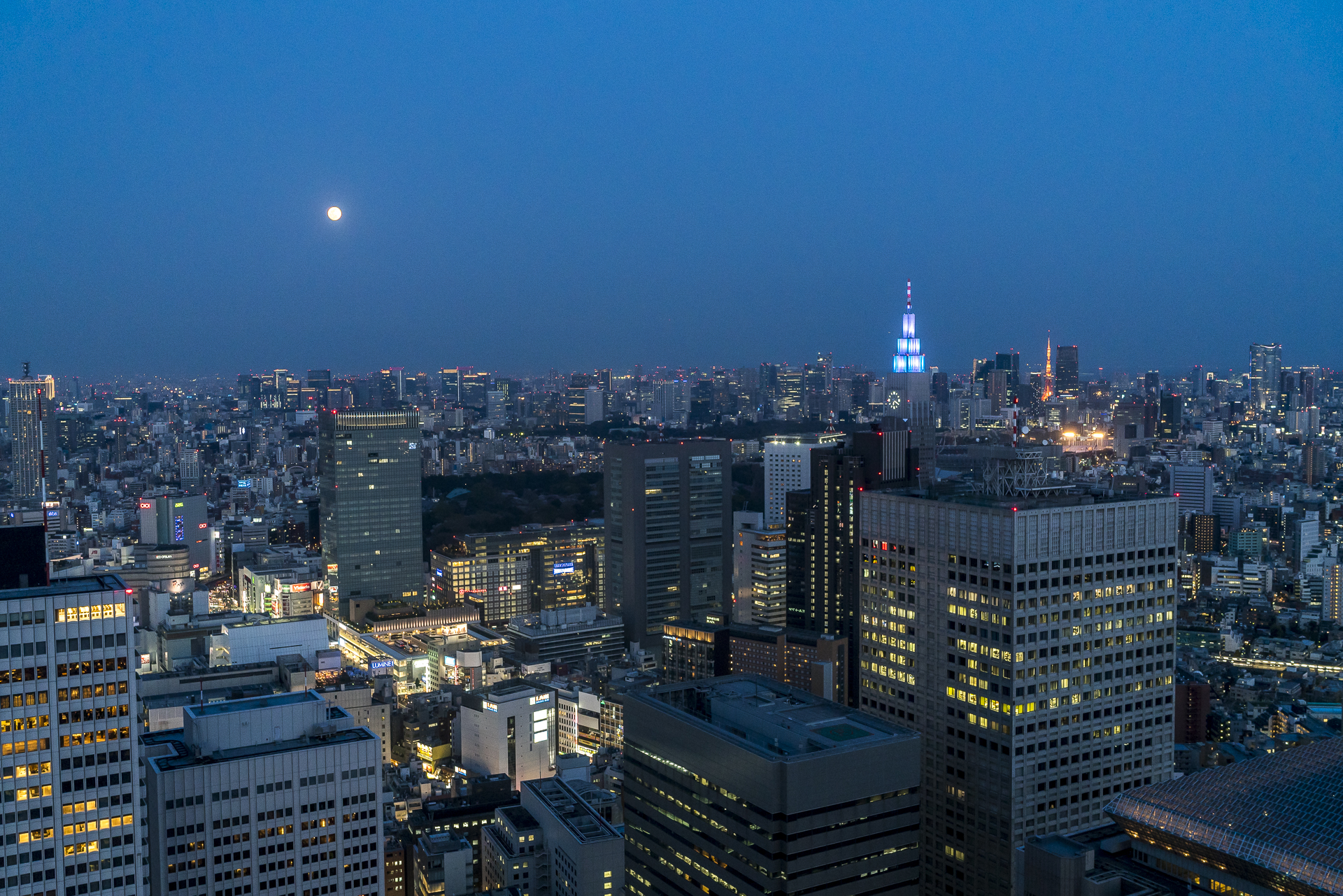
Sniff the air of the fish market |
Definitely more controversial is whether a visit to the Tsukiji fish market makes sense. Tokyo’s fish market is considered the largest of its kind in the world. The days are numbered at today’s location not far from the Ginza district. For planned buildings in the context of the 2020 Olympic Games, the fish market will have to move to the artificial island of Toyosu in the near future (current information). Until then, there are two ways to visit the market: take part in the Tuna campaign (access limited to 120 people per day – registration starts at 5:00 a.m. at the latest) or visit the market hall (the area is open to visitors from 10 a.m.). Tsukiji Fish Market is first and foremost a place where people work hard. Tourists standing around – and especially taking pictures of them wildly – are not welcome and I understand that. Those who visit the market should not do so out of voyeuristic motivation, but because they want to get to know another piece of the puzzle of multi-layered Tokyo. The following applies: The workers always have the right of way! And photos should also only be taken with restraint and the respective consent of the people recognizably photographed on them.
I found the insight into the hectic market hustle and bustle very exciting. After a short tour, we take a look around the “Vormarkt” set up for tourists. Here, one sushi restaurant follows the other. Some – including Sushi Dai – require early queuing and patience to get a coveted seat at the counter. We opt for the slightly shorter queue at Sushi Sei and waited a good 45 minutes for a table. The sushi is okay but not outstanding.

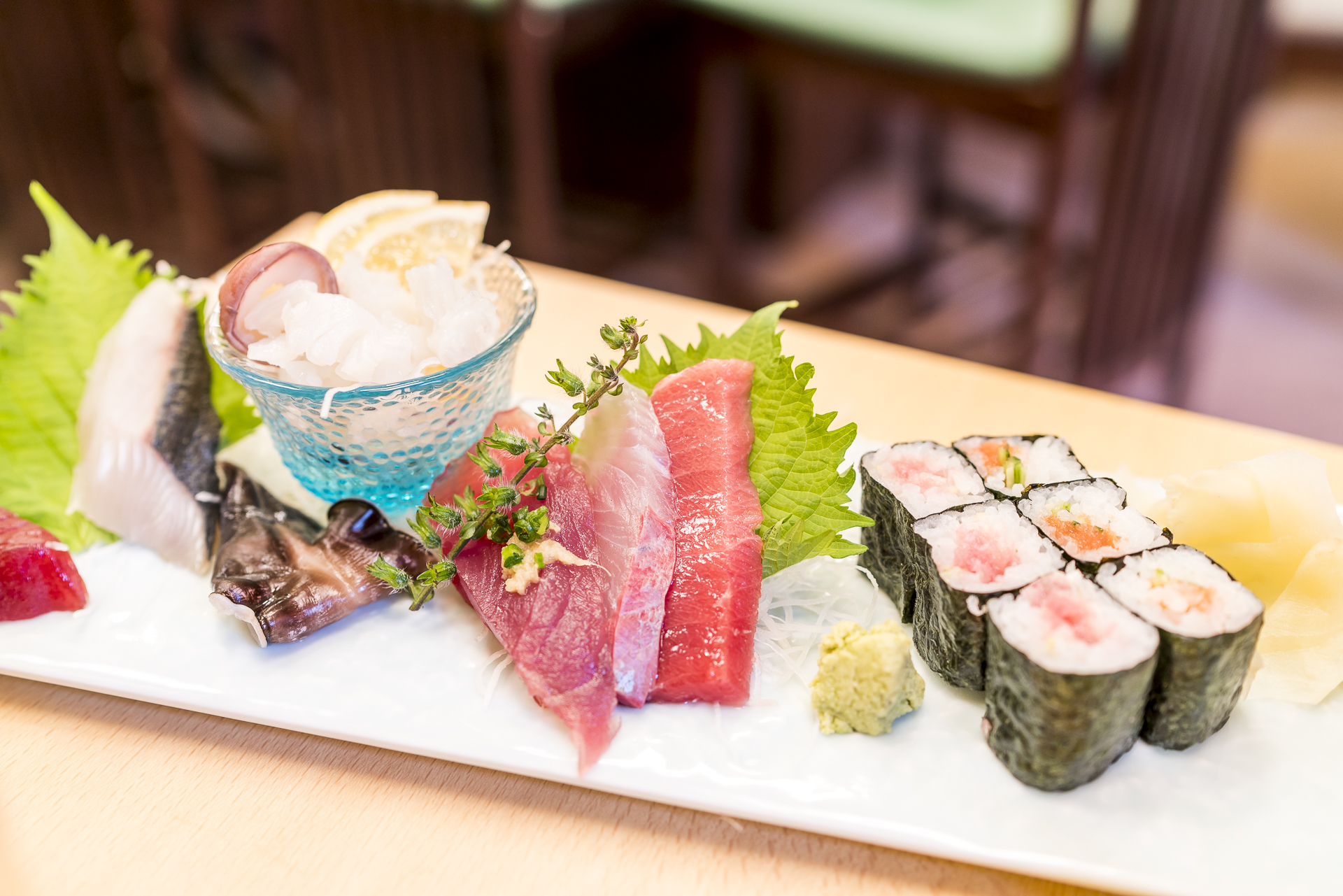
Admire Cherry Blossoms |
I had coordinated our travel time for Tokyo with the cherry blossom forecasts. However, the detailed forecasts for the respective year do not start until January and we booked the fixed points (flight / accommodation) last October. In the end, despite careful planning, we were a few days too late to really enjoy the full bloom for several days. The sakura (Japanese cherry blossom) reached Tokyo relatively early this year compared to the long-term average.
Nevertheless, we let ourselves be infected by the cherry blossom fever of the Japanese and paid a visit to some extensive parks in the first few days. I especially liked Yoyogi Park in Shibuya, Shiba Park at Tokyo Tower, Hamarikyu Gardens right next to Tsukiji Fish Market and Shinjuku Gyoen Park. Both Hamarikyu Garden and Shinjuku Gyoen Park have an entrance fee (300 / 200 yen) and are not open all the time. We actually wanted to go to Shinjuku Gyoen Park for sunrise and found out in front of the closed gate that it doesn’t open until 9:00 am. You can find great information about great cherry blossom photo spots in Tokyo on the Japan blog of Wanderweib.
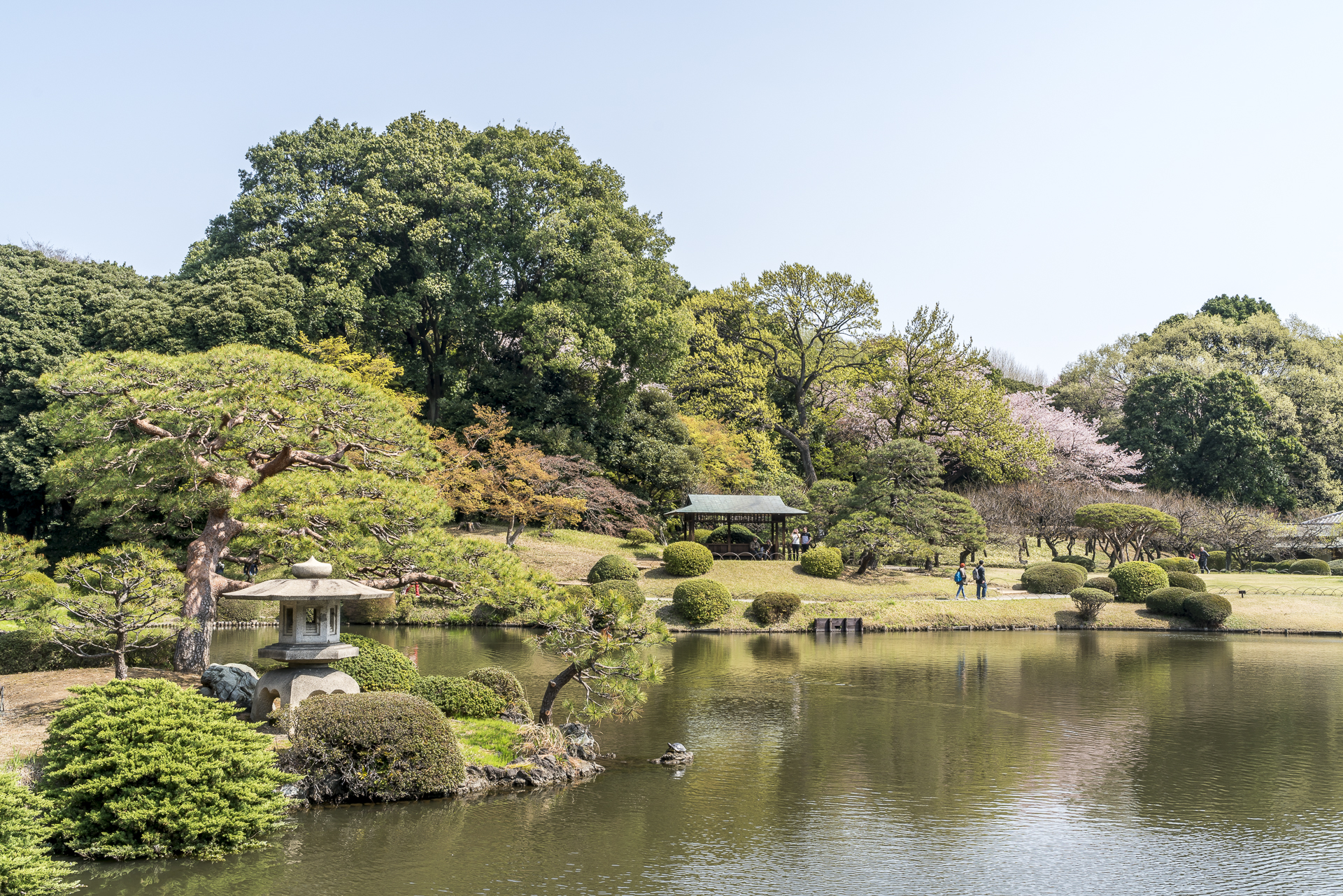
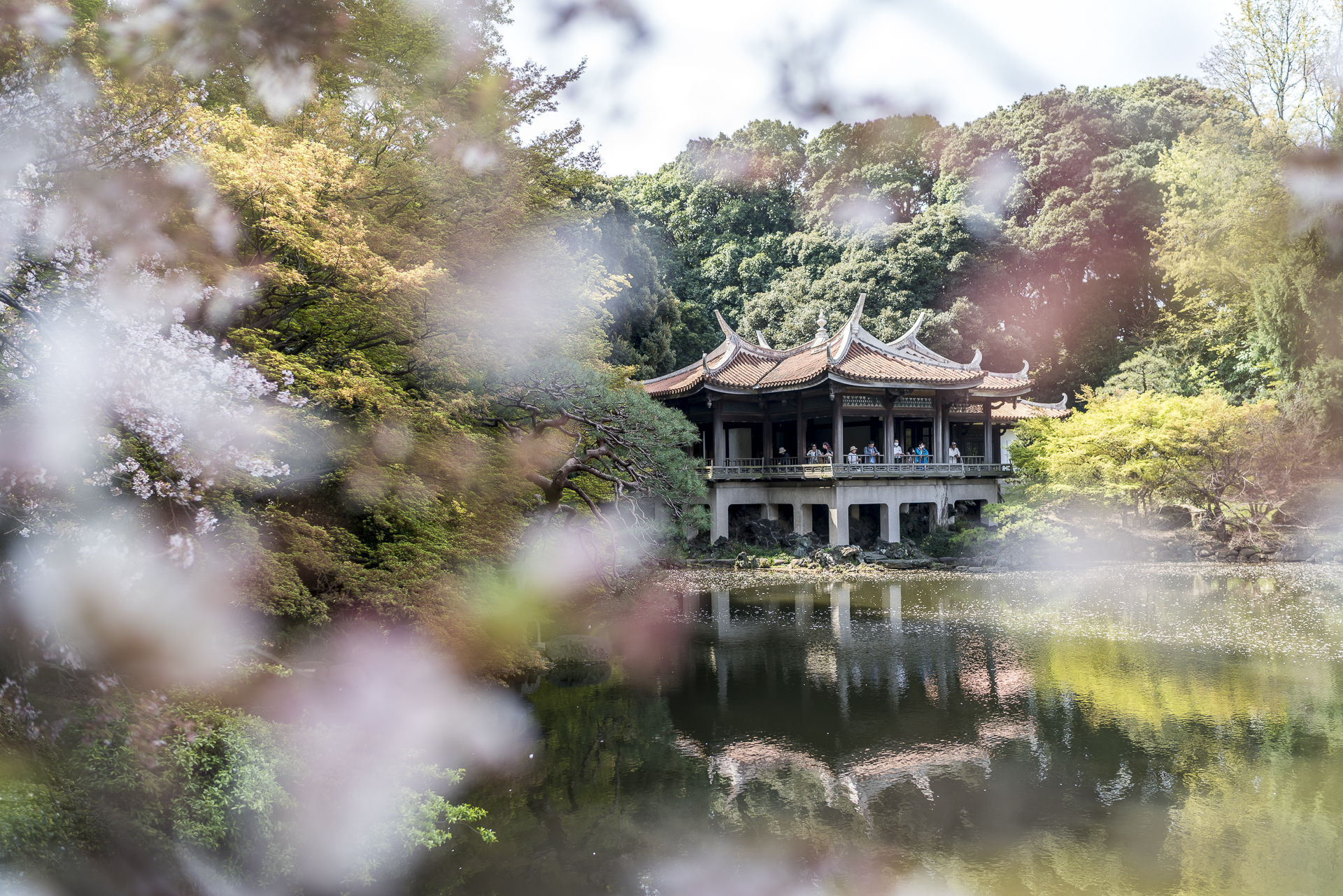
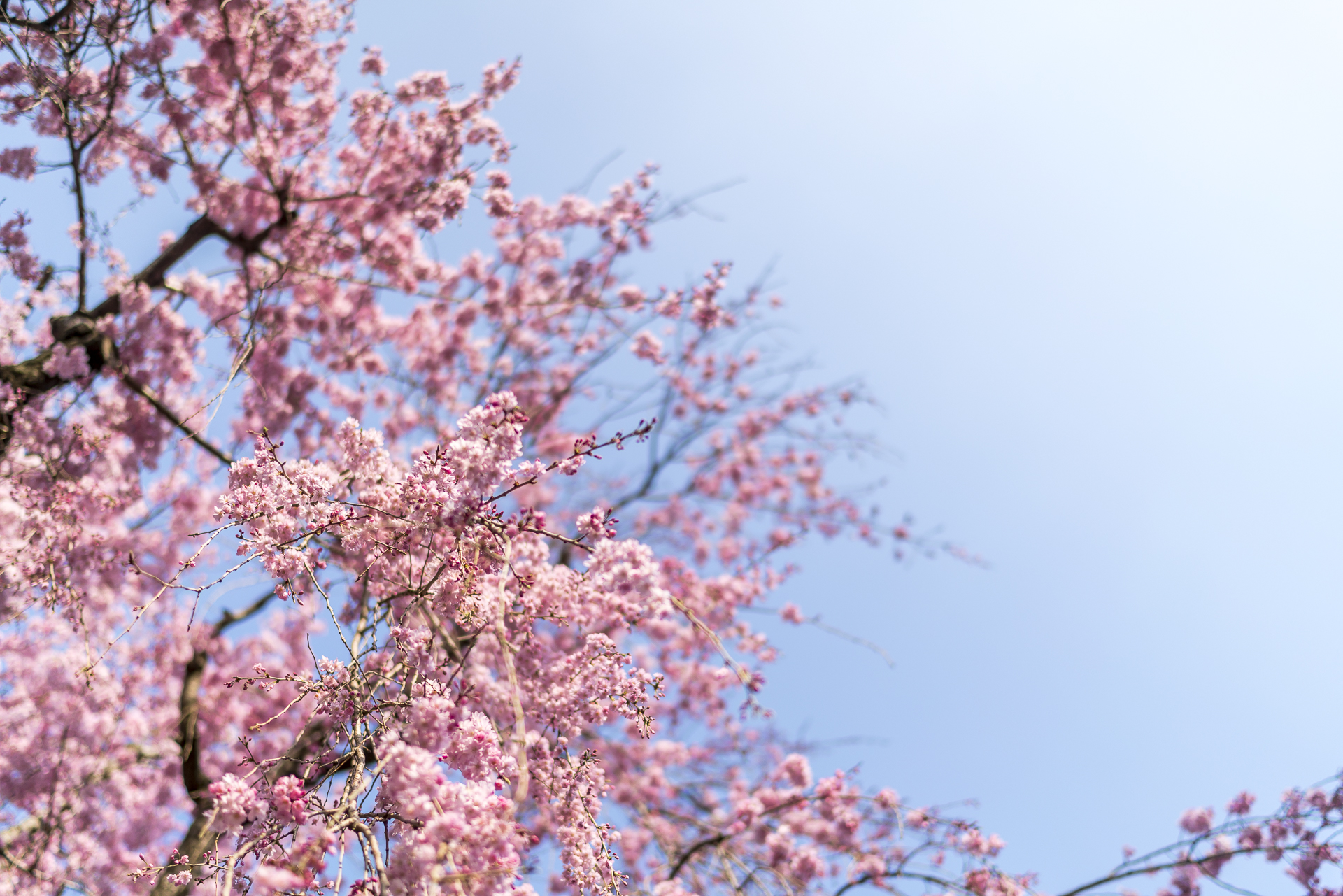
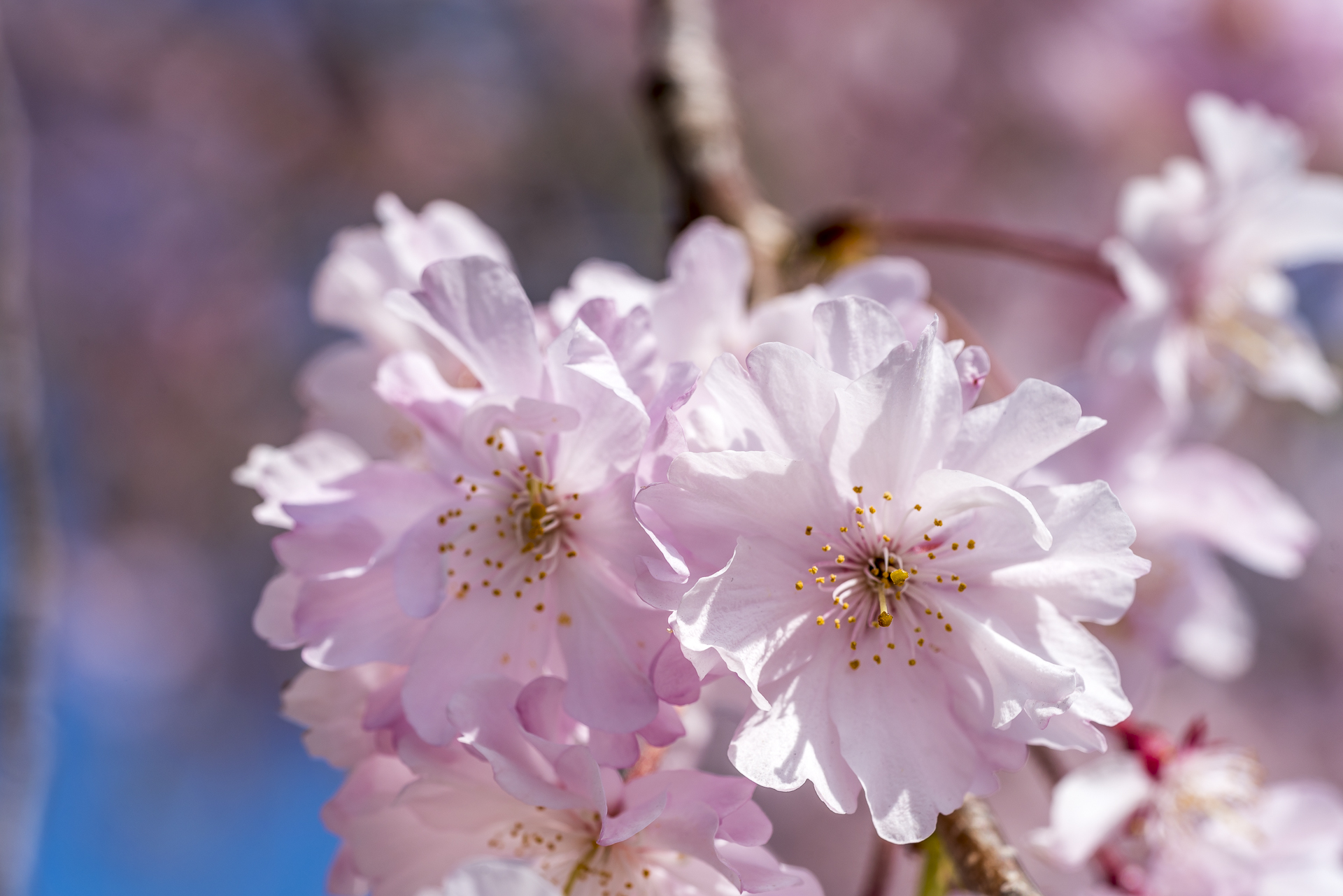
Tokio off the beaten path erkunden |
I liked Tokyo best when I roamed around aimlessly. I was always amazed at how quickly I could get from overstimulating shopping streets and train station centers to quiet residential areas. For example, northwest of Ueno Park or in the Roppongi Hills around the Aoyama Cemetery (with a beautiful cherry blossom avenue). If you are interested in architecture, you will find numerous interesting buildings in Tokyo. Most visitors to Ueno Park will probably simply overlook the Le Corbusier Building, which houses the Museum of Western Art. Also of interest – and only a few minutes away from Ueno Park – is “The International Library of Children’s Literature“, the renovation and extension of which was implemented by the Japanese architect Tadao Ando. You can find more tips on exciting architecture spots at The Golden Bun.
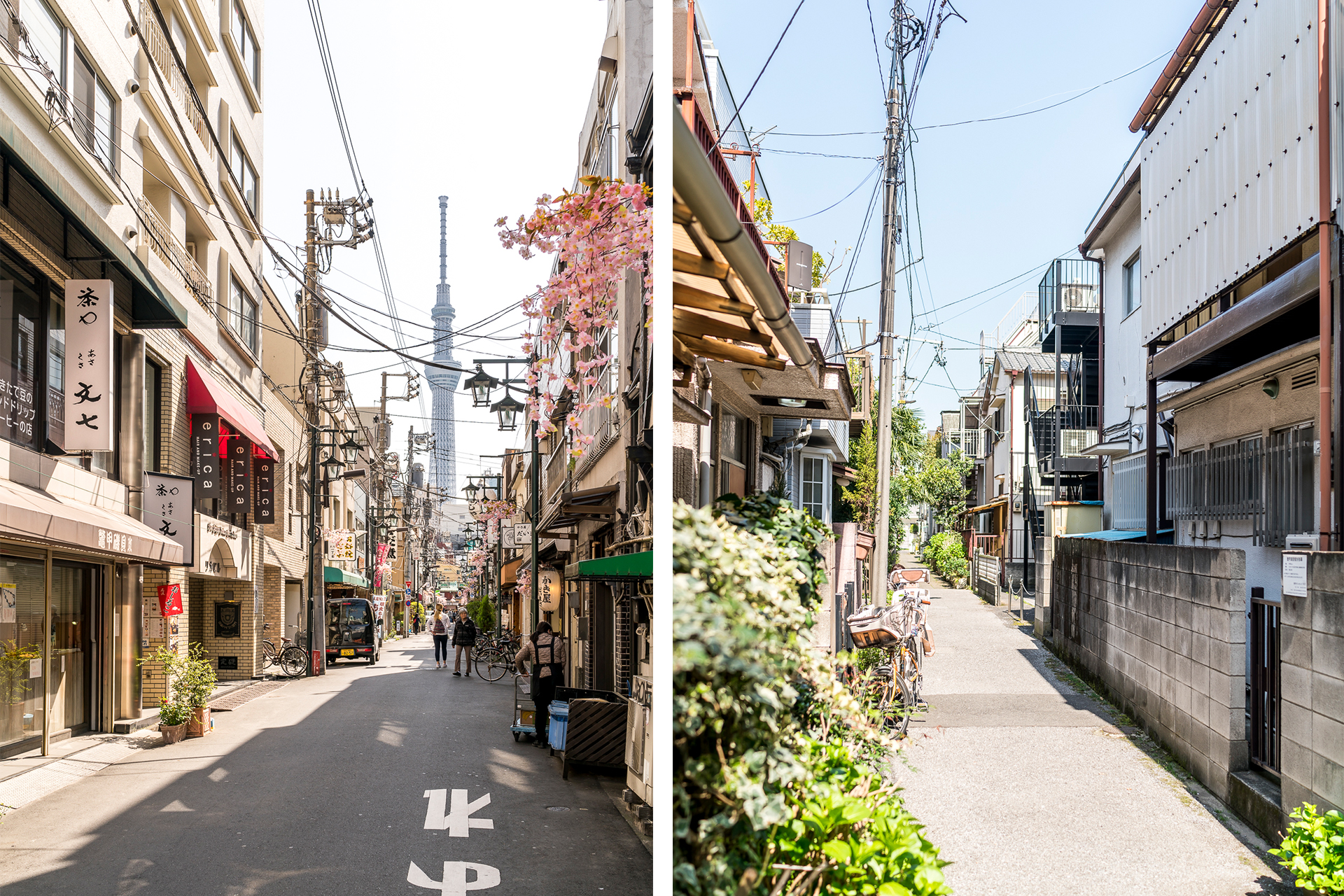
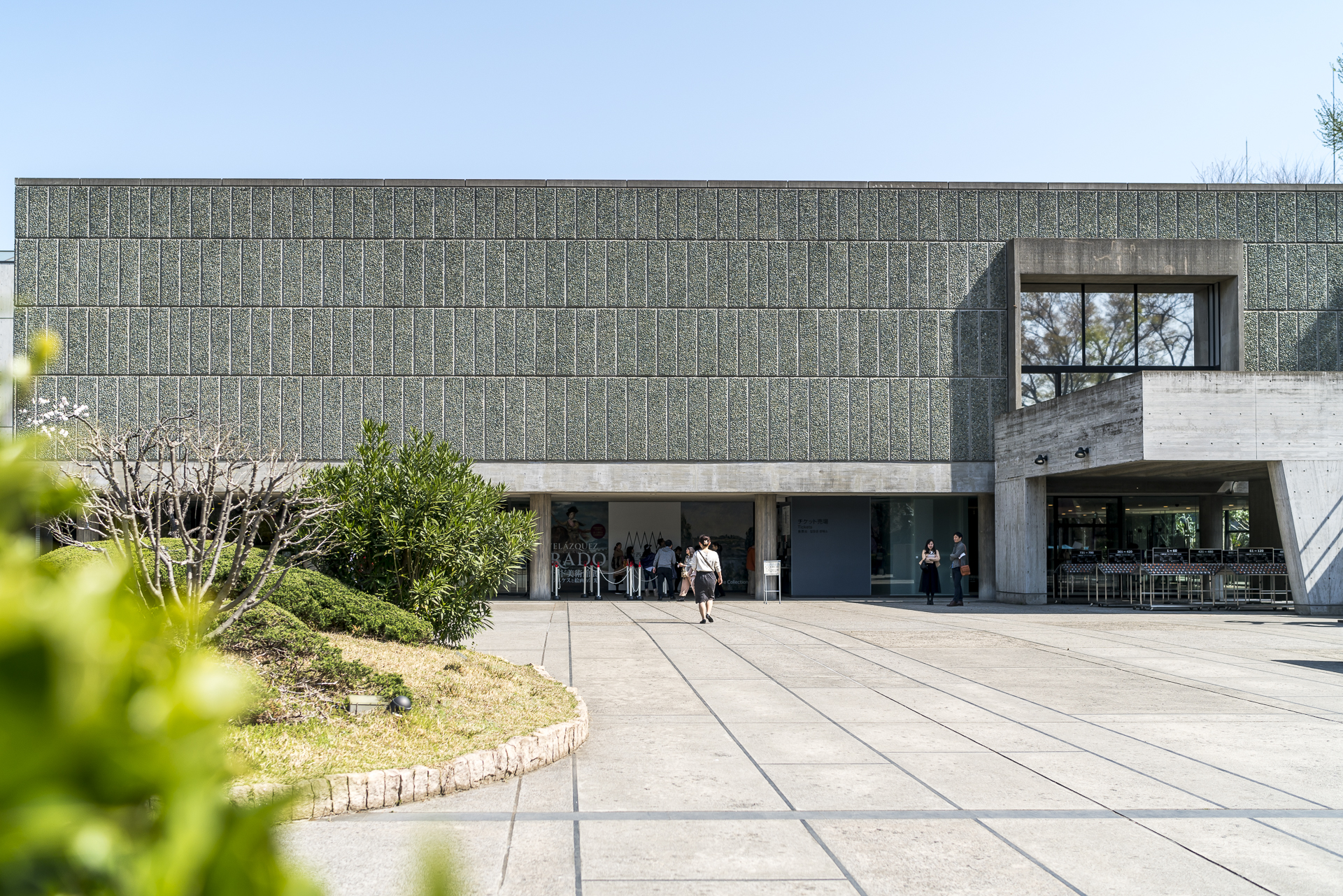
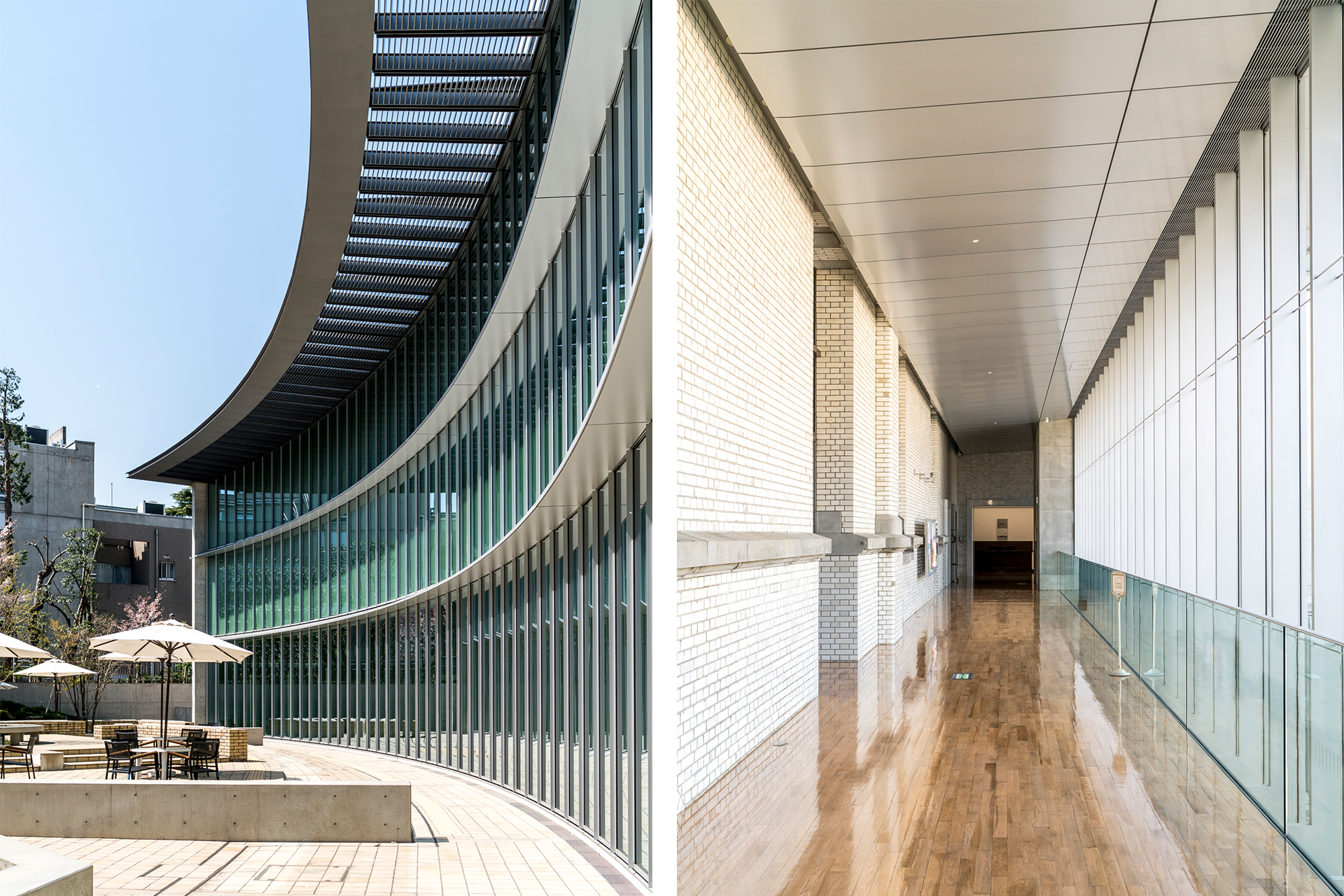
Take a Day Trip to Kamakura |
Our day trip takes us with the suburban train from Shinjuku Station a good hour south to the coastal town of Kamakura. The sights in Kamakura are spread around three different stations. We first get off at Kita-Kamakura station and visit the Kenchō-ji temple complex. Afterwards we follow the Daibutsu Hiking Trail, which connects the Jochi-ji Temple in Kita-Kamakura with the “Big Buddha” in the Kōtoku-in Temple near the Hase railway station. A great entertaining hike (maximum one hour walking time including temple visits in between). Another must-see attraction in central Kamakura is the Tsurugaoka Hachiman-gū Shrine.
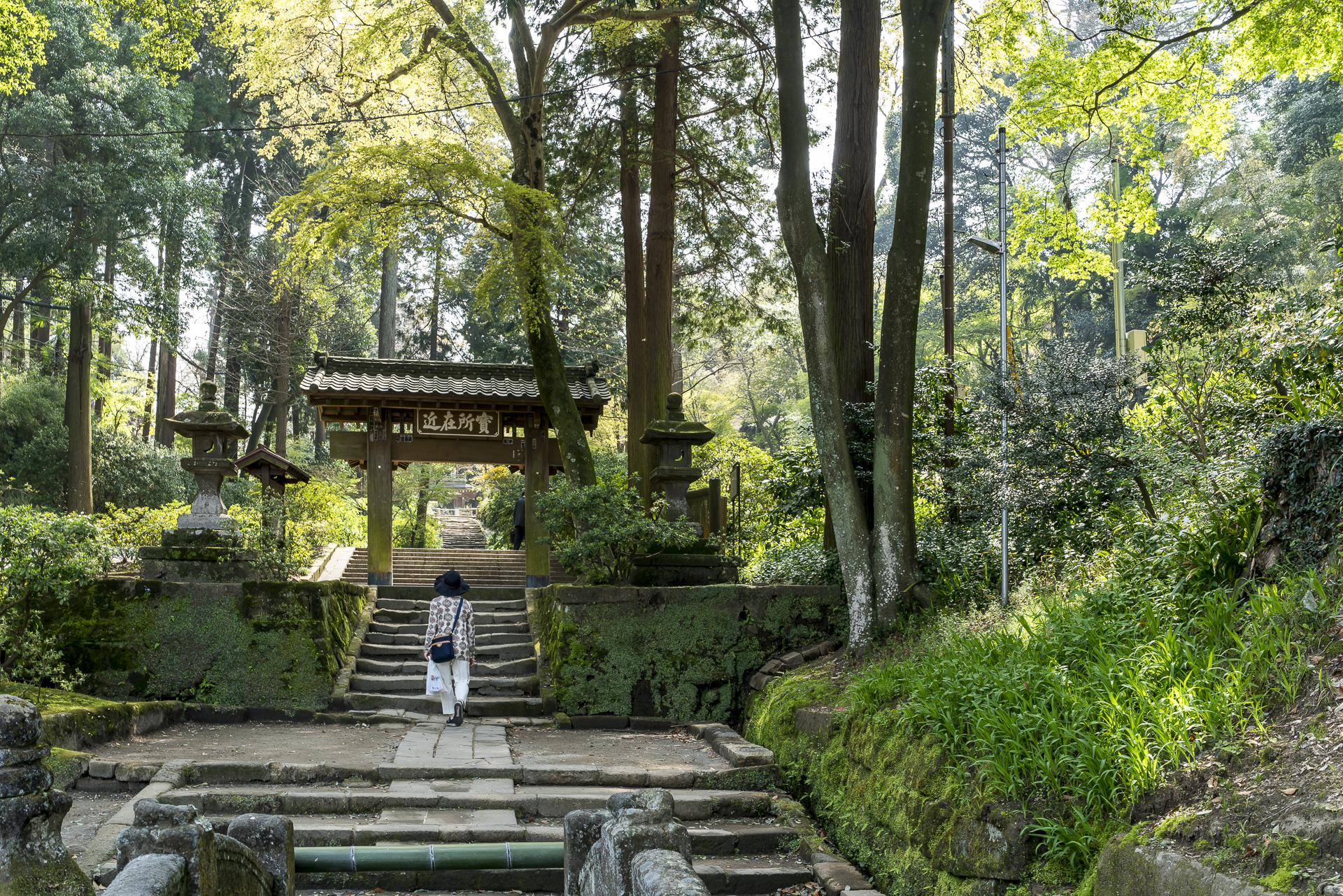
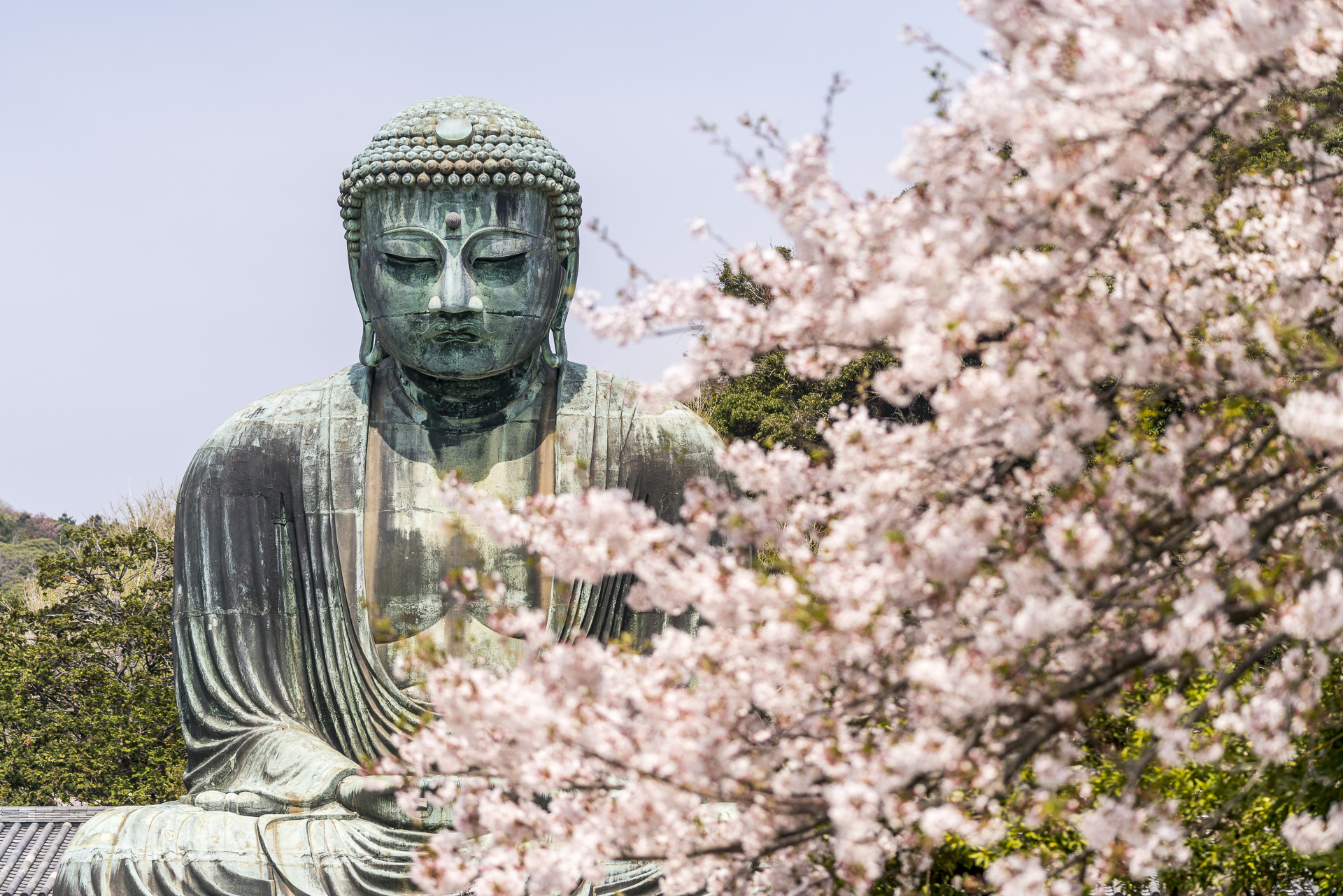
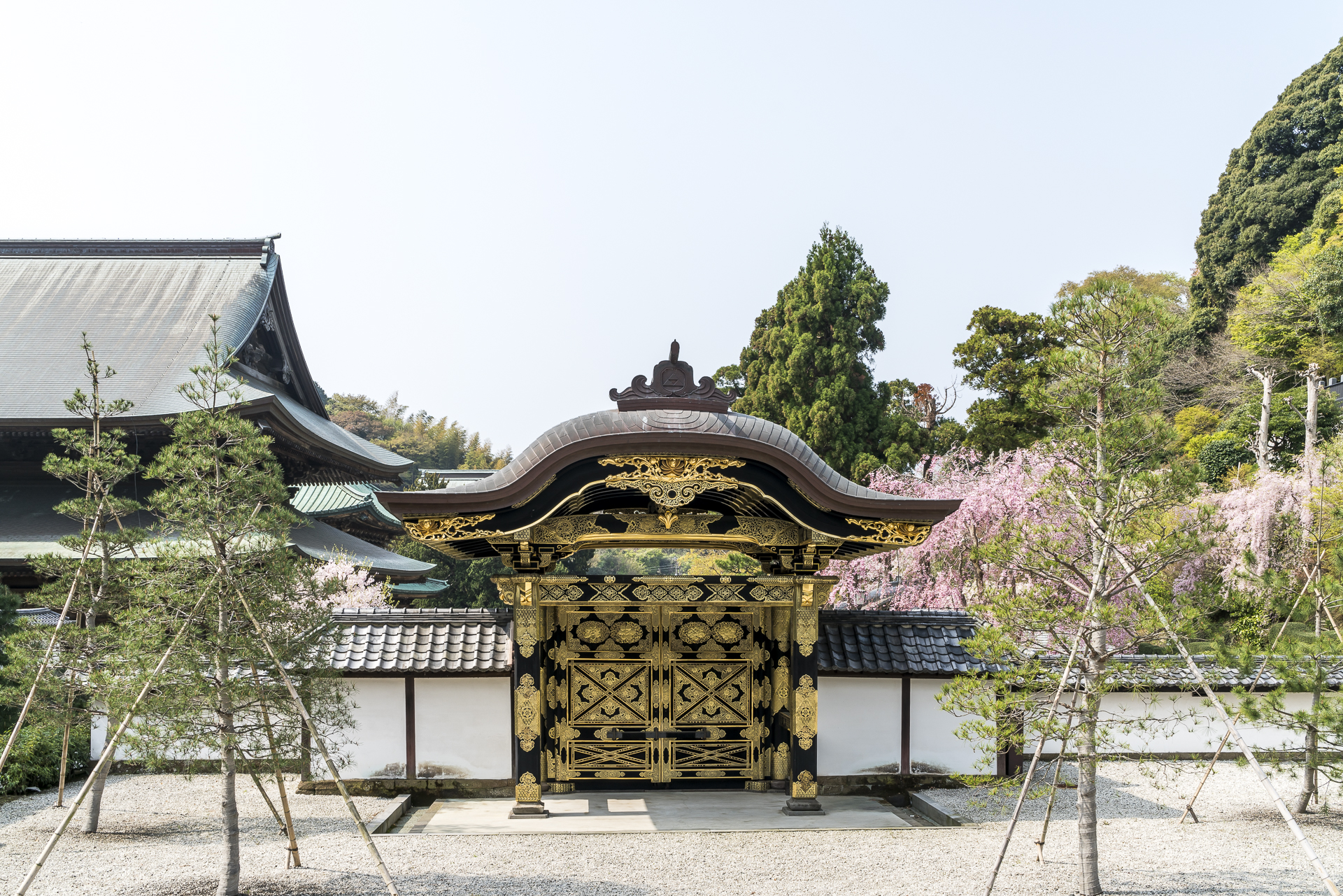
Eaten – Tokyo for Foodies
An incredible 234 restaurants are Michelin-starred in Tokyo, including twelve 3-star restaurants. Tokyo is undisputedly a paradise for gourmets and offers an almost unbelievable variety of good food. The only hurdle is securing the coveted seats without having to queue for ages. Most restaurant sites and their reservation tools – if there is one at all – are mostly in Japanese, and some restaurants only take reservations from a hotel concierge over the phone. We used the service of Pocket Concierge for the reservations in the expensive restaurants, which worked relatively well. The disadvantage: Pocket Concierge charges a processing fee per reservation.
Simple & Good |
Even though we spent a lot more money on food than on accommodation in Tokyo, good food doesn’t necessarily have to be expensive. There are plenty of budget-friendly options out there. If you stroll through Asakusa in the early morning like we did, I can recommend a stop at the Kagetsudo bread stand. This is where the delicately scented “Melonpan” bread is sold. My choice fell on the bread version filled with matcha ice cream – so delicious!
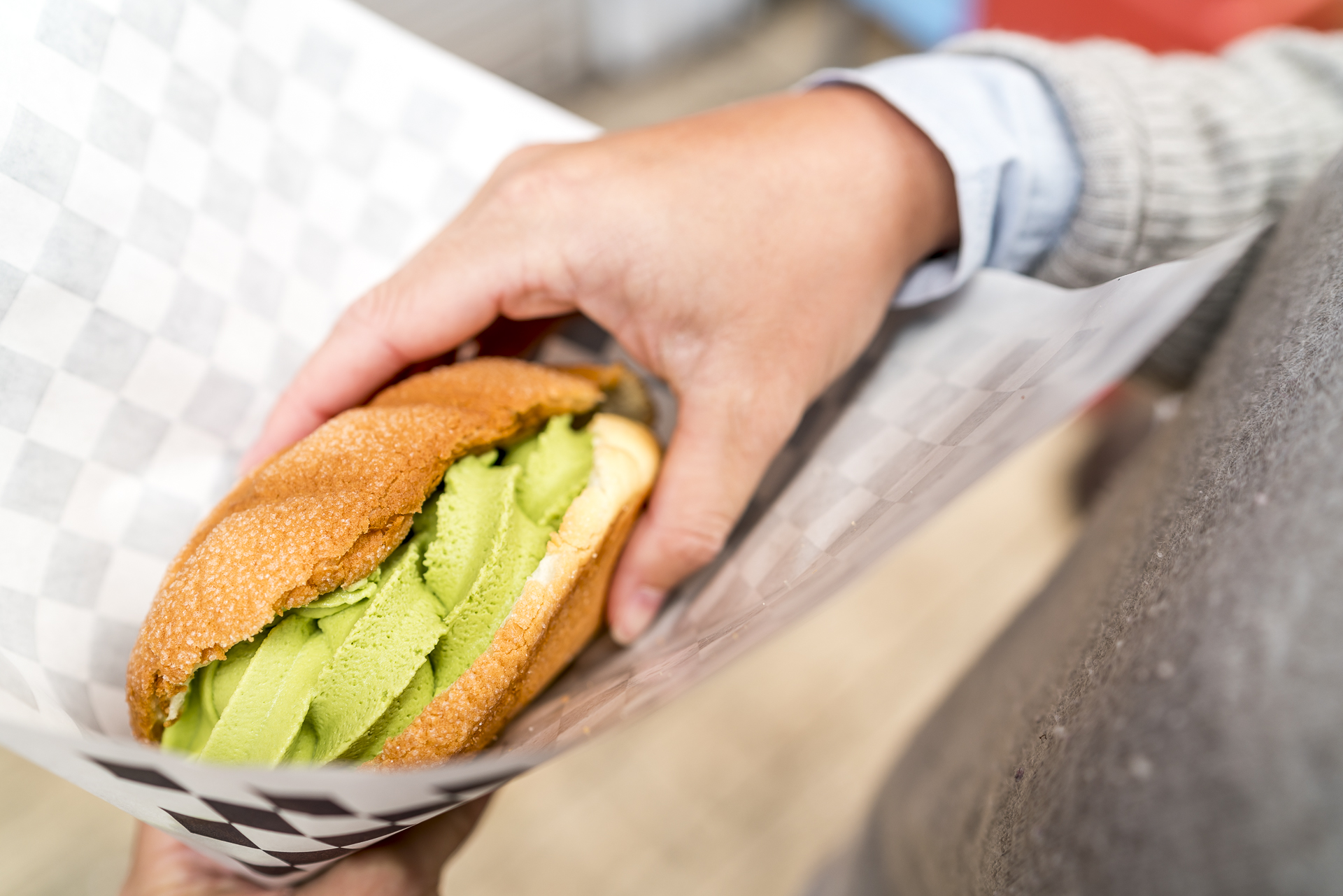
We queued for a good hour for the udon noodles at the Kamachiku restaurant (2 Chome-14-18 Nezu, Bunkyō) in a pleasant, quiet residential area northwest of Ueno Park – but it was worth it!
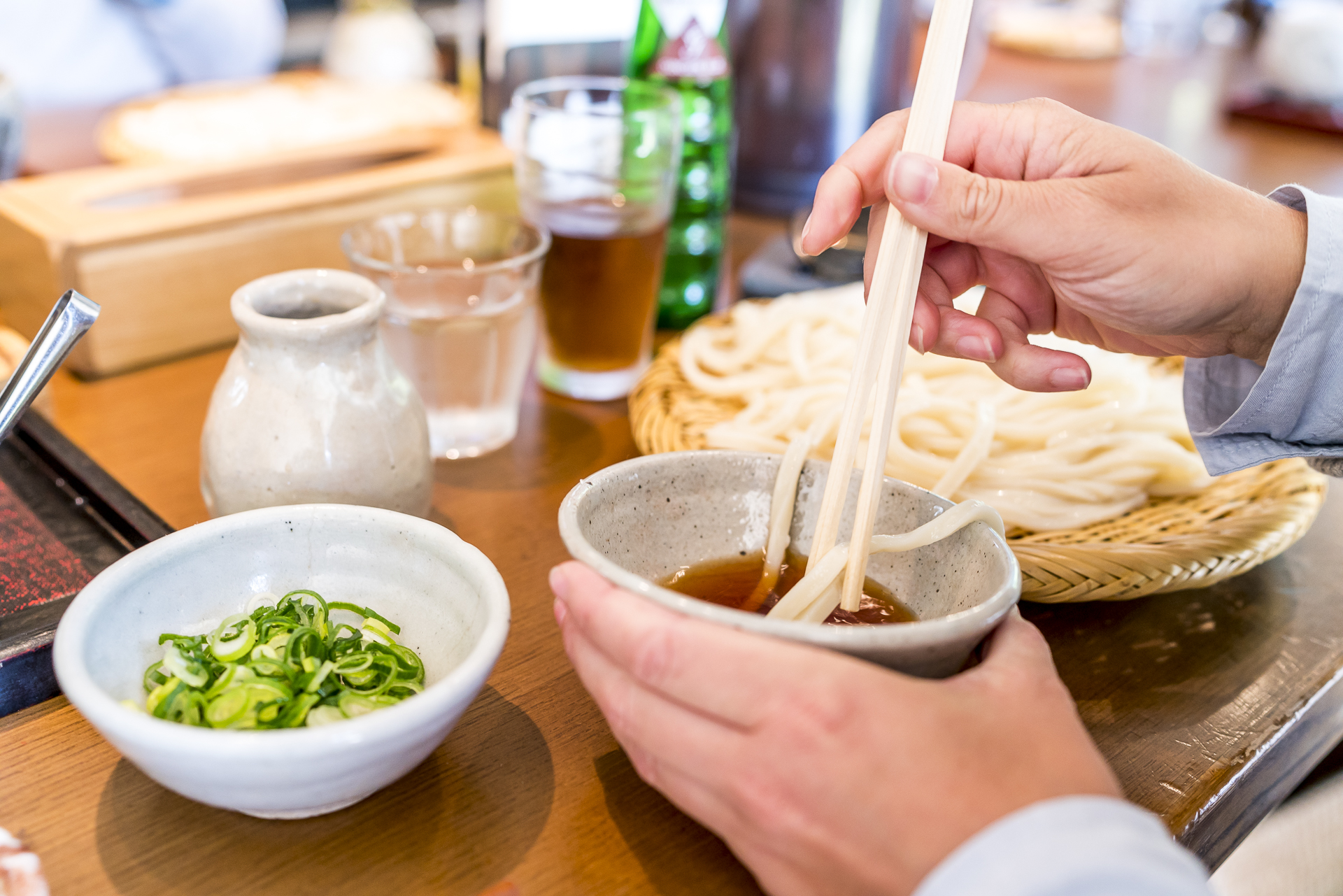
Tonkatsu is a breaded pork cutlet served along with a sticky sauce. If you are out and about in Roppongi Hills, you will find an underground food mall with various restaurants near the metro station of the same name. Among them is the popular tonkatsu restaurant Butagumi Shokudo.
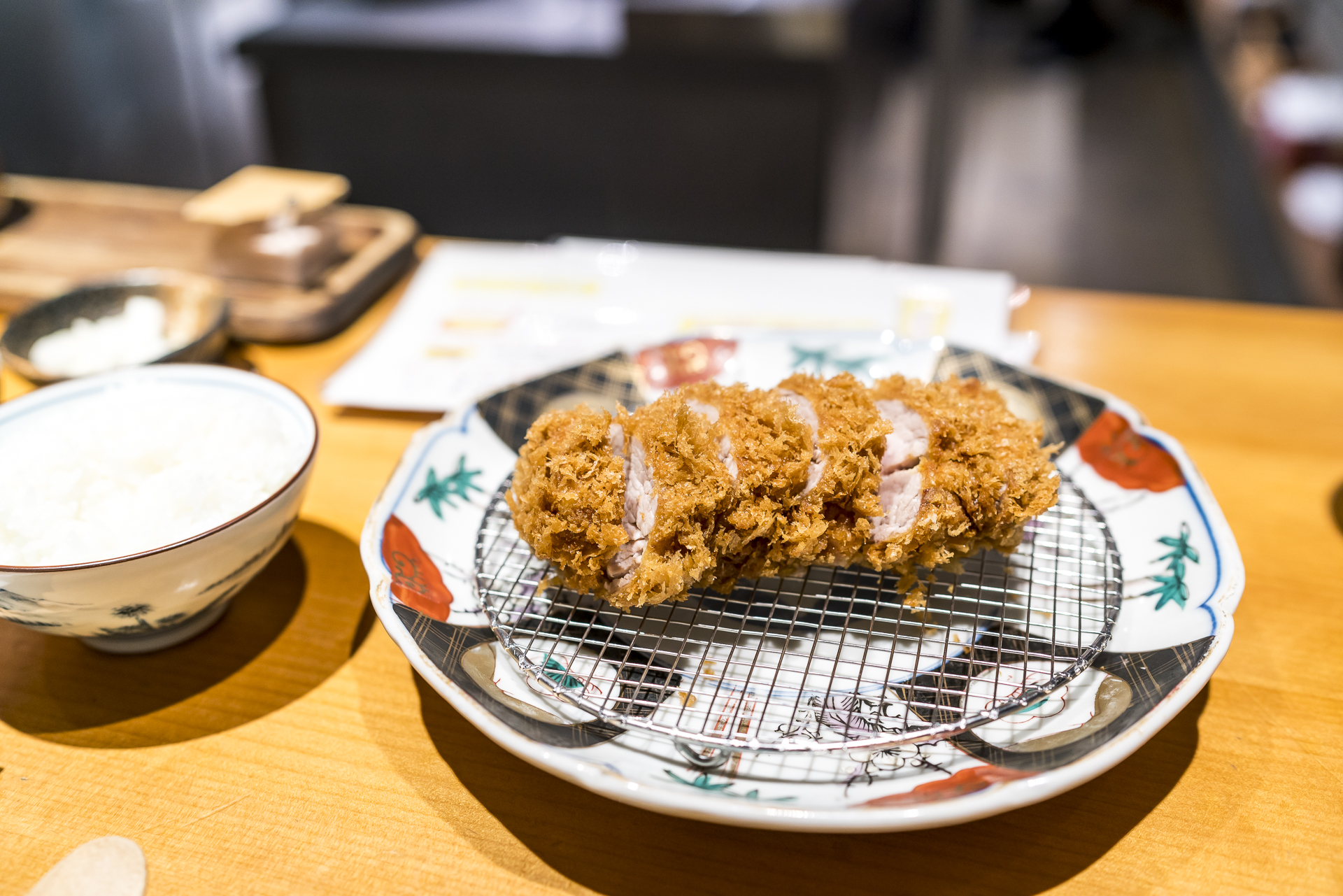
In Ginza, we happened to walk (hungry) past a beautiful, brightly designed ground floor that caught my attention. Me’s Cafe & Kitchen doesn’t serve traditional Japanese cuisine, but those in the mood for a light lunch won’t be disappointed here.
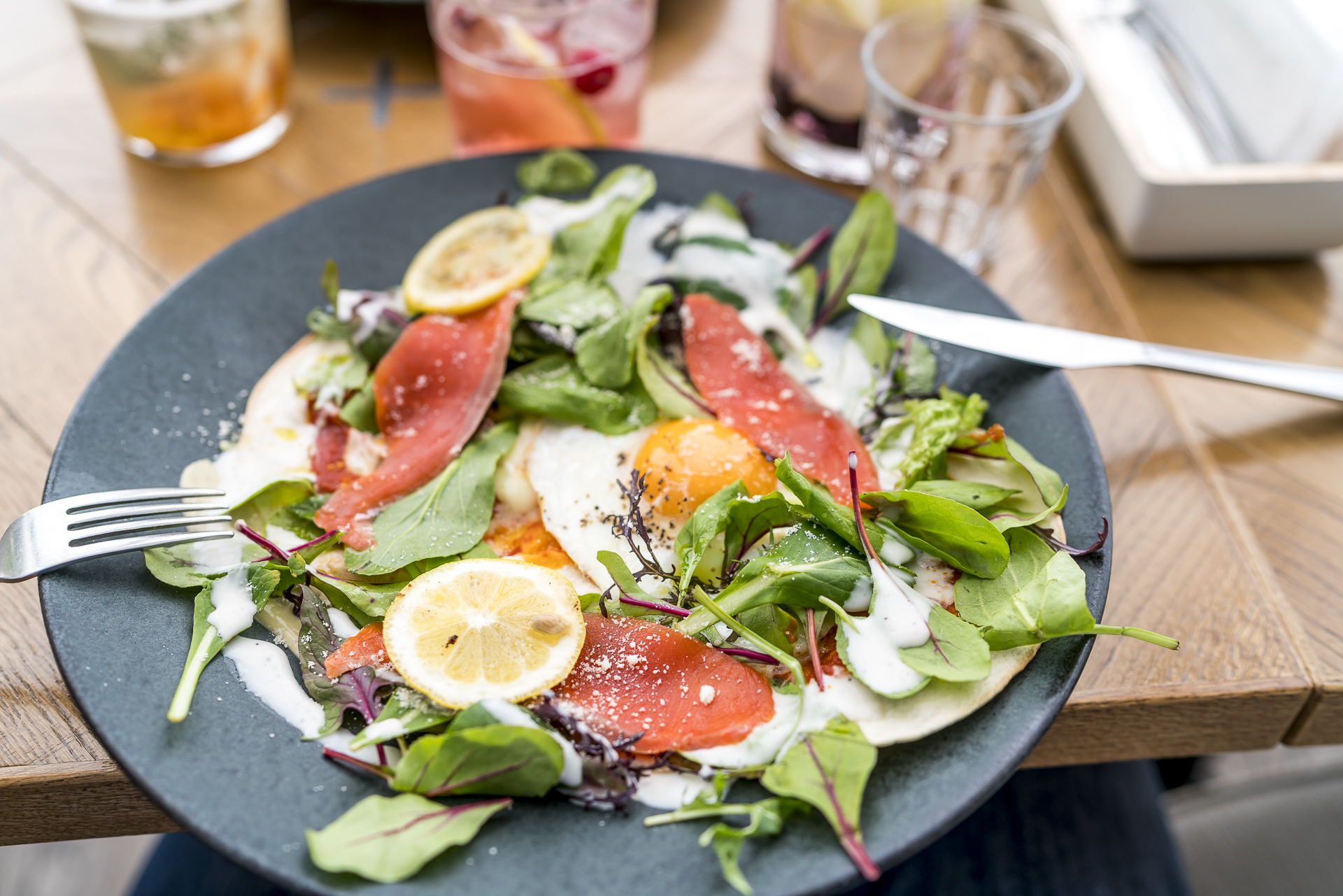
On the first evening, we were looking for a restaurant near our accommodation and ended up at Kitchen Doromamire. A very charming izkaya (neighborhood pub) whose specialty is yakitori (chicken skewers). Also worth a visit is the sous-sol of the Isetan department store, not far from Shinjuku Station. Similar to the Globus Delicatessa, various Japanese specialties are offered here over an entire floor. Perfect for stocking up on delicacies and then enjoying them in the comfort of your own home.
Fine Dining in Tokio |
We simply have to try one of the twelve 3-star restaurants – whatever the cost. That’s the motto. The Kanda restaurant in the Roppongi Hills won the race because we were able to reserve our counter space via Pocket Concierge. There is a choice of two different tasting menus with ten or twelve different courses. The cost of the cheaper option is around 280 CHF. In comparison, the menus in Swiss 3-star restaurants no longer seem so exorbitantly expensive. The food was exquisite from A to Z, although we are basically of the opinion that the Michelin Guide distributes the stars in Japan very generously.
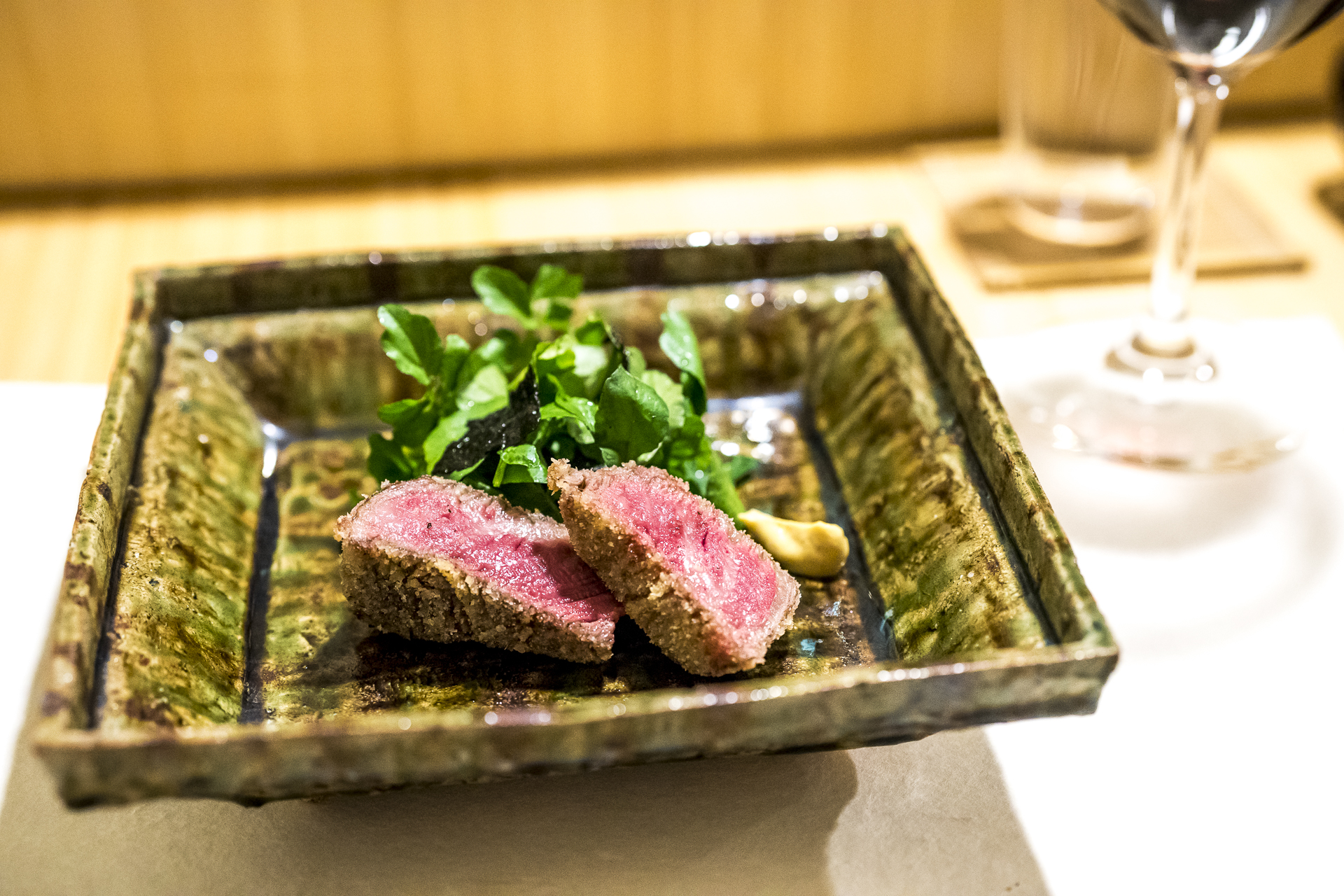
The ten-course tasting menu in the 1-star restaurant Shinjuku Kappo Nakajima, on the other hand, is almost a bargain at around 130 CHF. The lunch menu is said to be particularly inexpensive here – but you probably have to work for that with a longer queue.
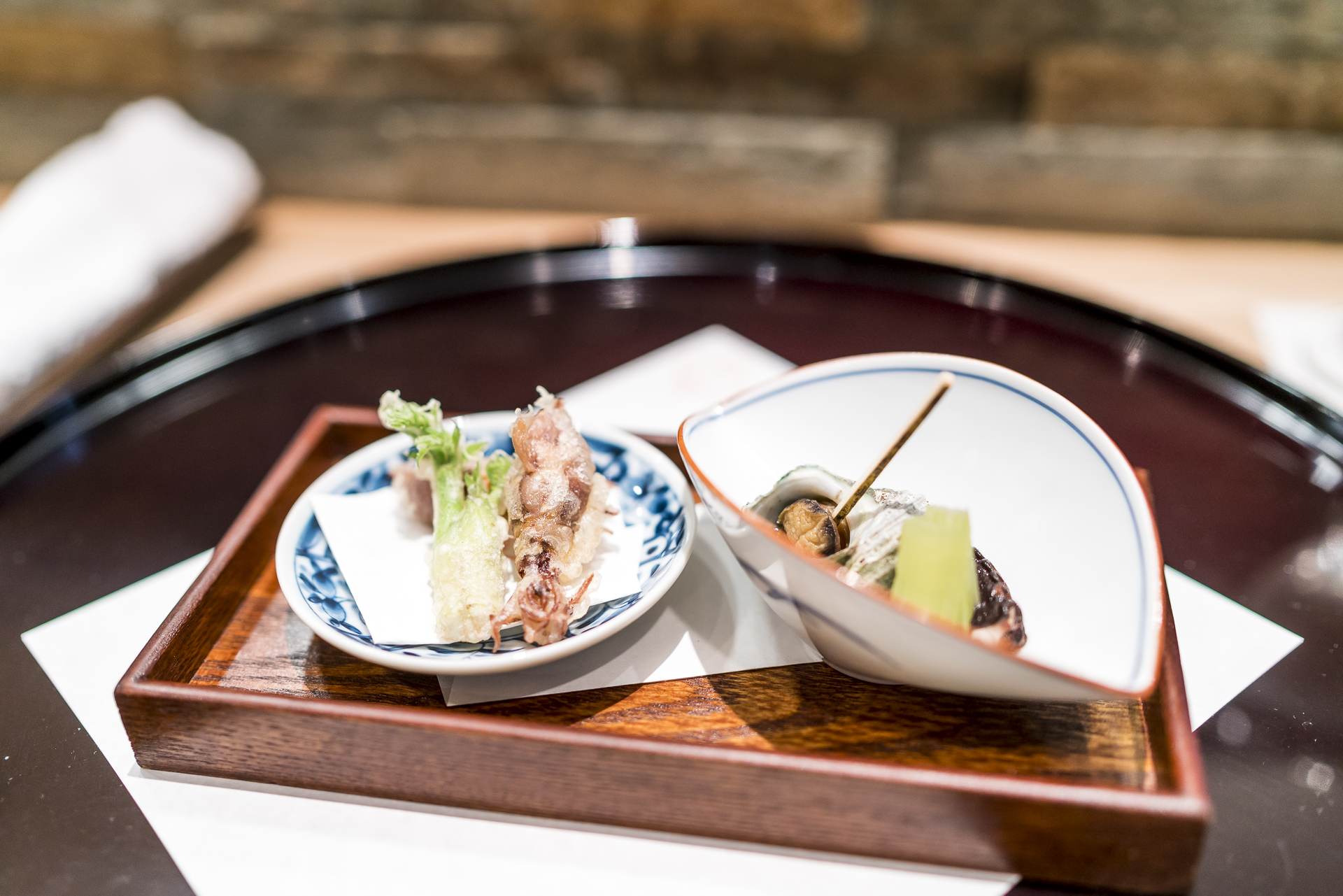
The best piece of meat (Japanese beef from Hokkaido) was served to us at the New York Grill on the 52nd floor of the Park Hyatt Tokyo including a phenomenal view over the city. Here I had made a reservation by phone at relatively short notice, because at a Park Hyatt you can assume that someone understands English. Right next to the New York Grill is the New York Bar, known from Lost in Translation. In contrast to the Grill, the New York Bar does not accept reservations, “first come, first served”
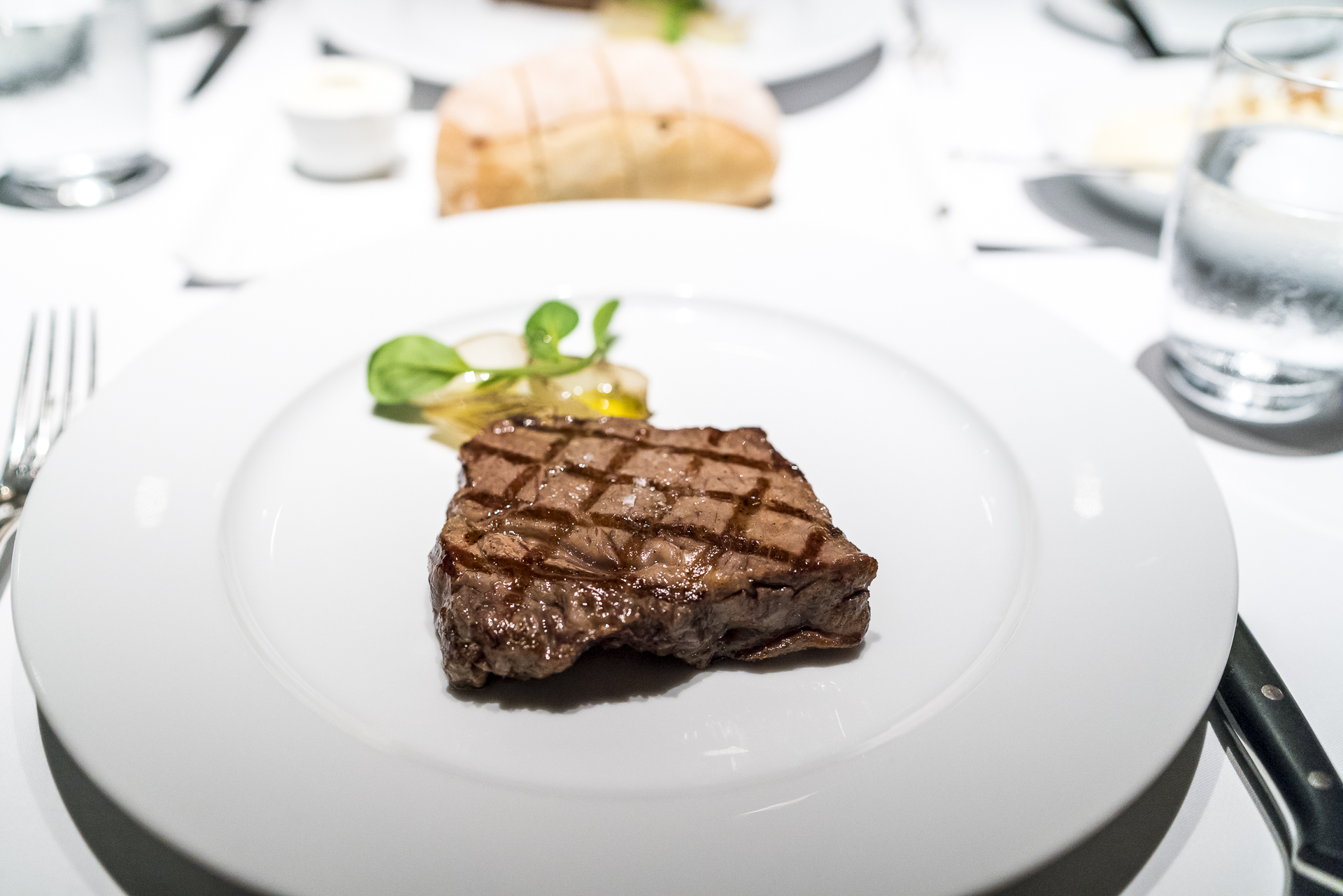
My culinary highlight in Tokyo is the sushi evening at Suhi Harumi’s on the fourth floor of an office building labeled exclusively in Japanese. 10 counter seats – a Suhi chef et voilà. Again, we made a reservation in advance via Pocket Concierge and paid 120 CHF for the tasting menu with a total of 10 nigiri sushi (all individually prepared by hand right in front of us). The sushi chef was most pleased that we eat the nigiri with our fingers and not with chopsticks. Sushi is classic finger food, as the friend correctly informed himself in advance in this sushi etiquette guide.
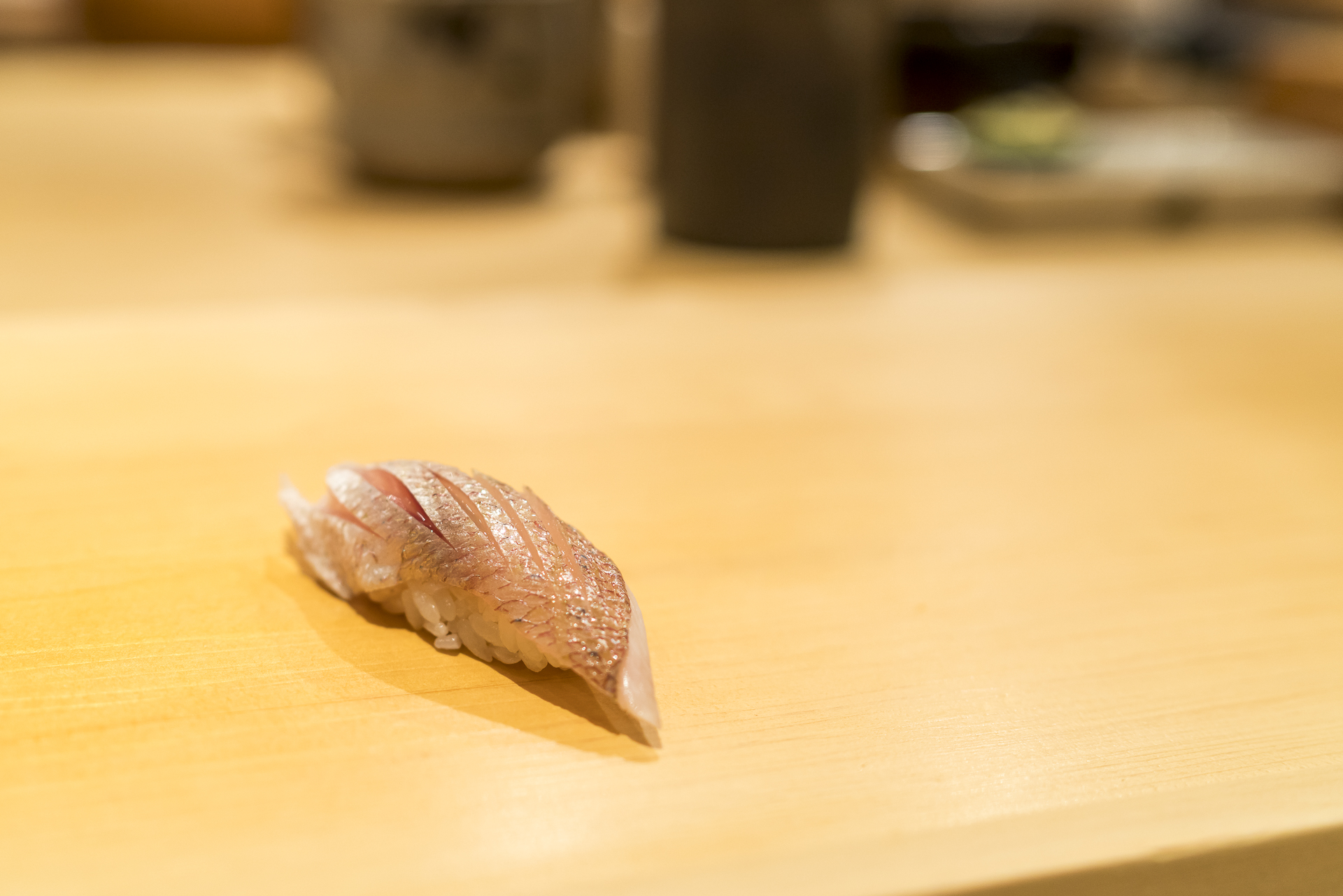
Slept – Overnight tip for Tokyo
We are not avid Airbnb users, but for Tokyo we found what we were looking for on this platform. Our apartment was a five-minute walk from the Ushigome-yanagichō subway station on the Oedo Line, with direct connections to Shinjuku and Ueno stations. The equipment included a small kitchen, a washing machine (learning: the majority of washing machines in Japan only work with cold water) and a portable Wi-Fi hotspot router, which we were allowed to take outside. For 6 nights we paid 450 CHF, which is great value for money. For us, this is the perfect starting point to discover Tokyo.
Update November 2019: currently this apartment is unfortunately no longer listed on Airbnb.
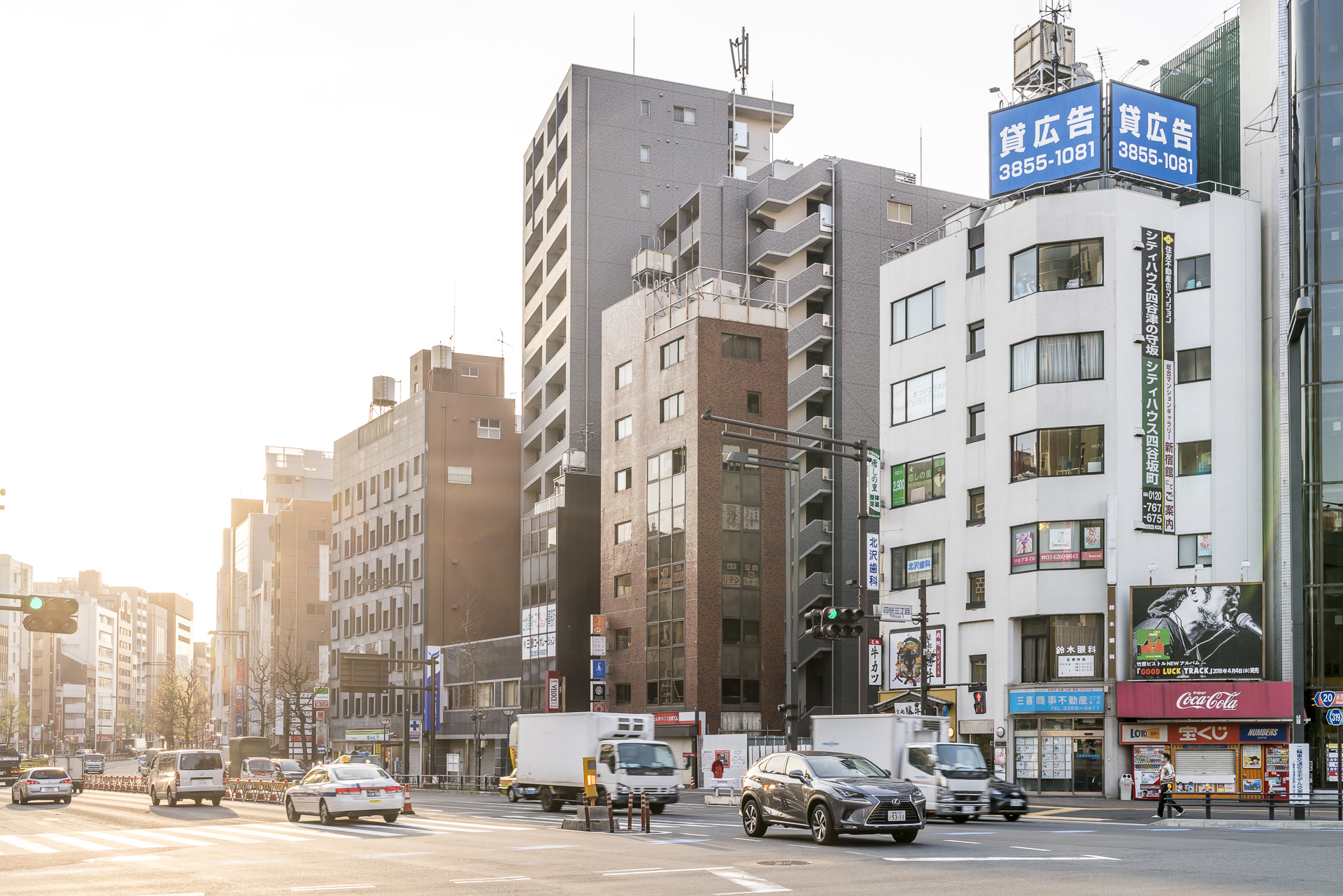
Practical tips and interesting facts for your trip to Tokyo
Transportation – Metro Rides in Tokyo
- The easiest way to pay for metro and suburban train journeys in Japan’s cities is with a top-up chip card (IC card). Since the train and metro lines are operated by different providers, different chip cards are also in circulation. We were confused at the beginning because we had read about the Suica card everywhere, but at our first metro station only the Pasmo card was available. You pay a deposit of 500 yen for the card, which you get back when you return the card. Now, however, you can only return the Pasmo Card at stations on the Keihin or Keisei Line or at Narita or Haneda Airport. The Suica Card deposit will be refunded at all JR East stations in Tokyo. Both the Pasmo and Suica cards also work in other cities (including Kyoto and Osaka) and are valid for 10 years.
- A one-way metro ride costs between 170 and 300 yen, depending on the route. We spent about 1,000 yen per day on the metro rides. On the website of Tokyo Metro you will find more helpful information about the IC-Card and the different ticket options.
- All metro stations are numbered. It helps to remember the numbers (instead of the complicated names).
- In the subway stations, the walking directions are usually marked on the ground – the system between left- and right-hand traffic seems to change at will (at least I haven’t figured out the system yet – the same applies to the escalators).
- Japanese people are generally very disciplined, although I had the impression that not everything runs neatly in line according to the stereotype during rush hours and is occasionally subtly pushed forward.
Eating Out in Tokyo
- Many restaurants have an English menu – we didn’t have any major communication problems anywhere.
- The restaurants are often very small and accordingly there is a queue. Some restaurants have a waiting list – if you are unsure, just ask if there is a list.
- In the expensive restaurants, it is normal – and necessary – to make reservations. If you’re not staying in a hotel with a concierge service, Pocket Concierge is the most practical alternative.
General information
- Be prepared for the fact that you will have to queue a lot and often.
- The opening hours published on Google Maps (for restaurants, parks, attractions) do not always coincide with the actual opening hours.
- Tokyo is a safe city and the Japanese are very helpful. We experienced several times that we briefly checked the route on Google Maps and at that moment were approached by a person who wanted to help us.


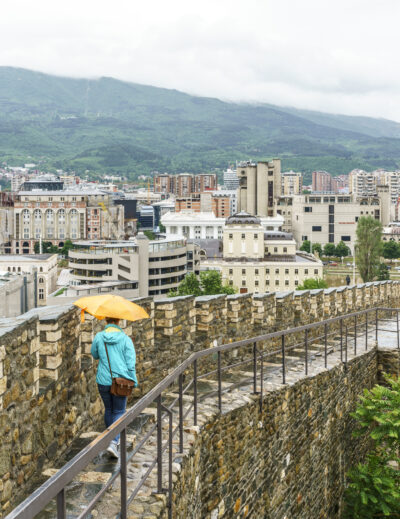
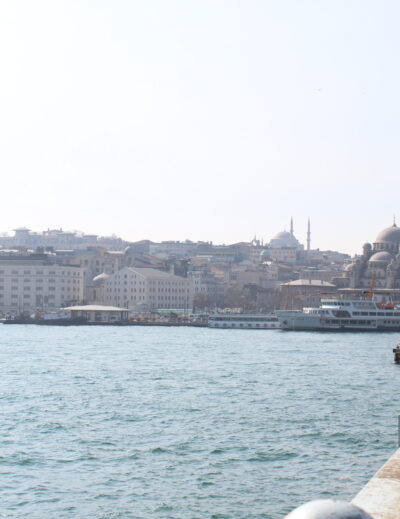
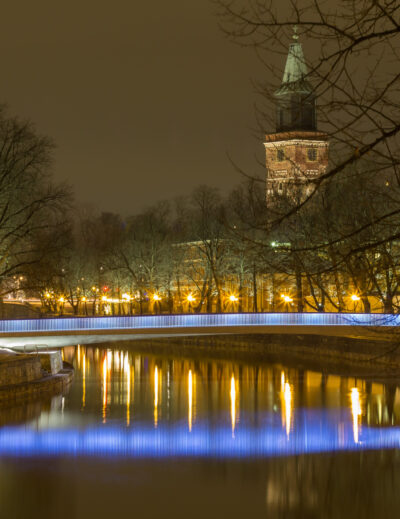
Leave a Reply